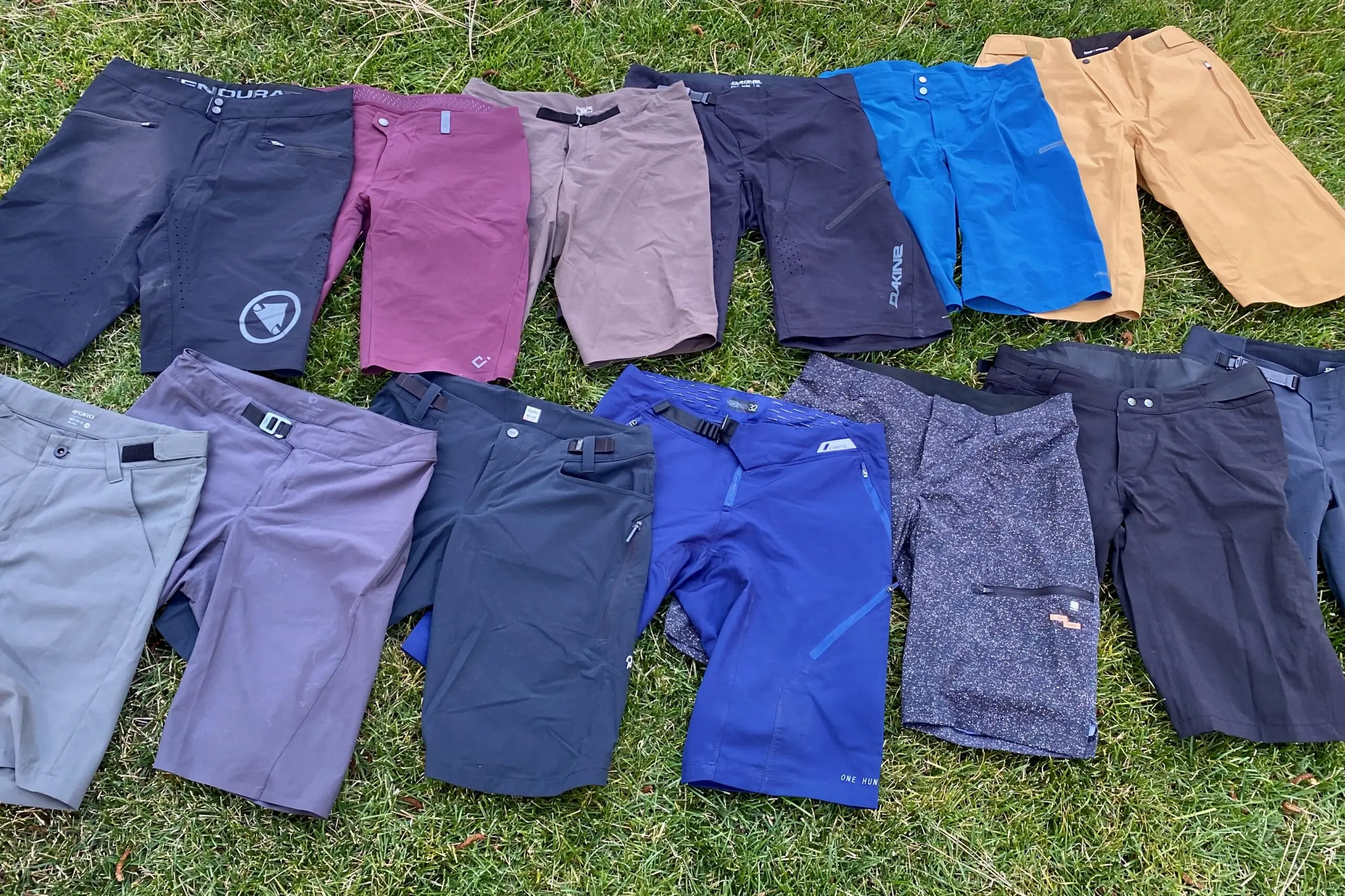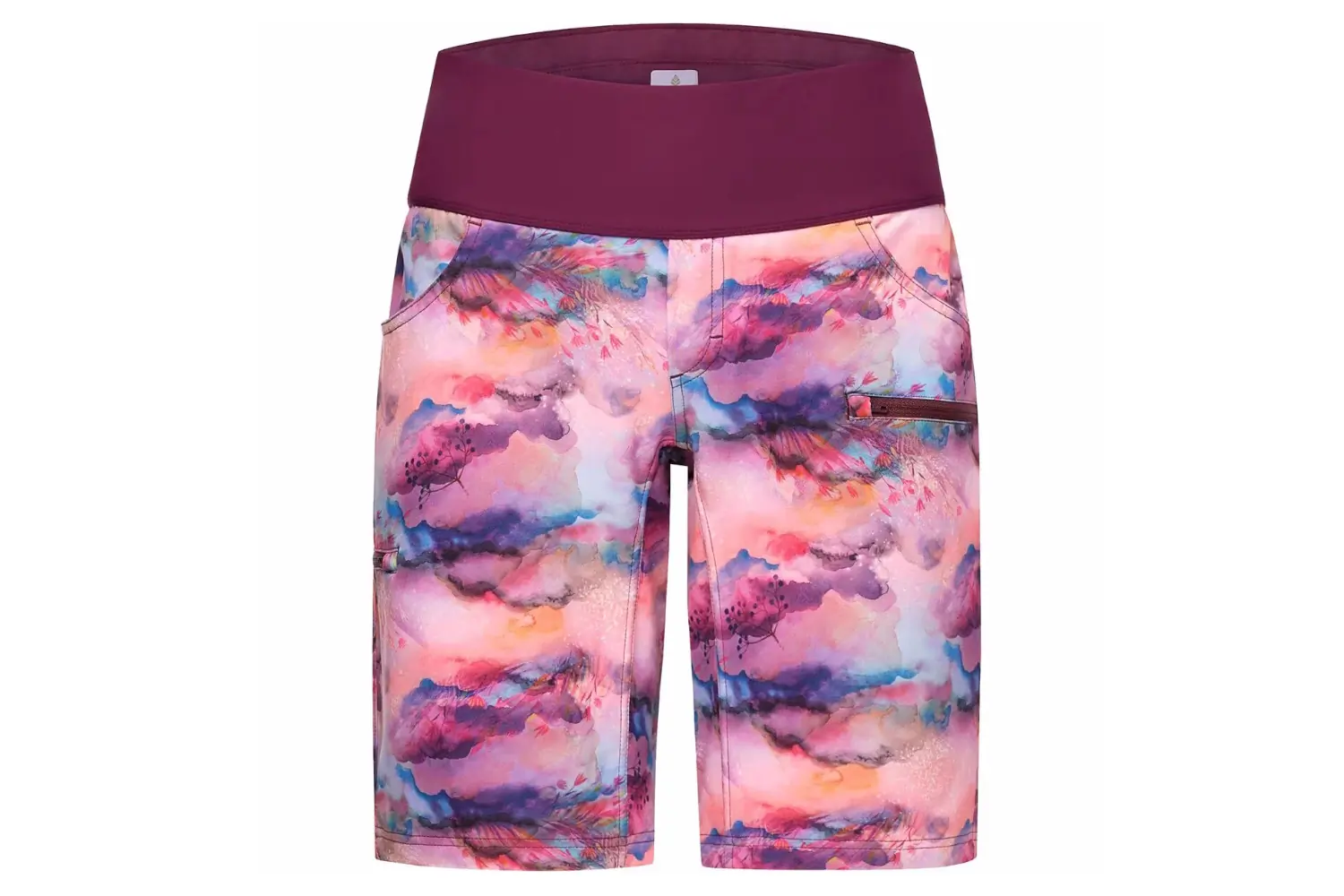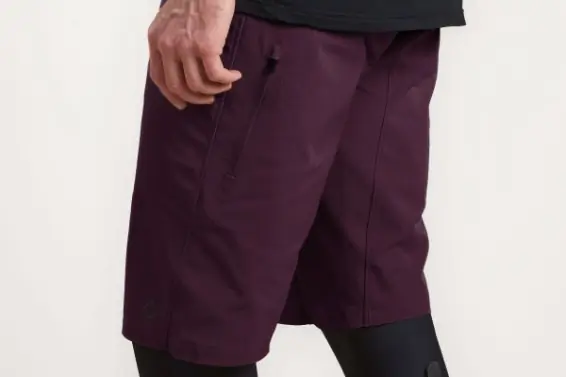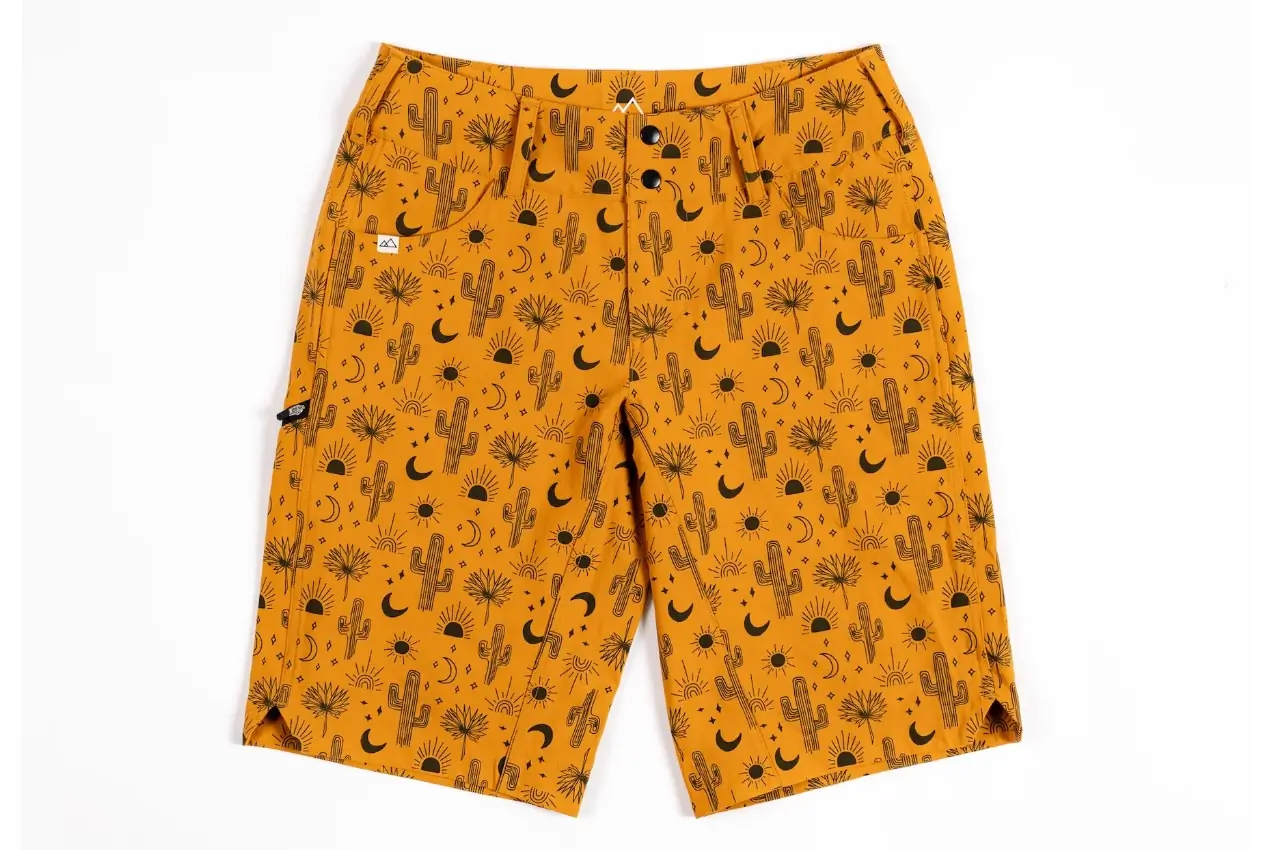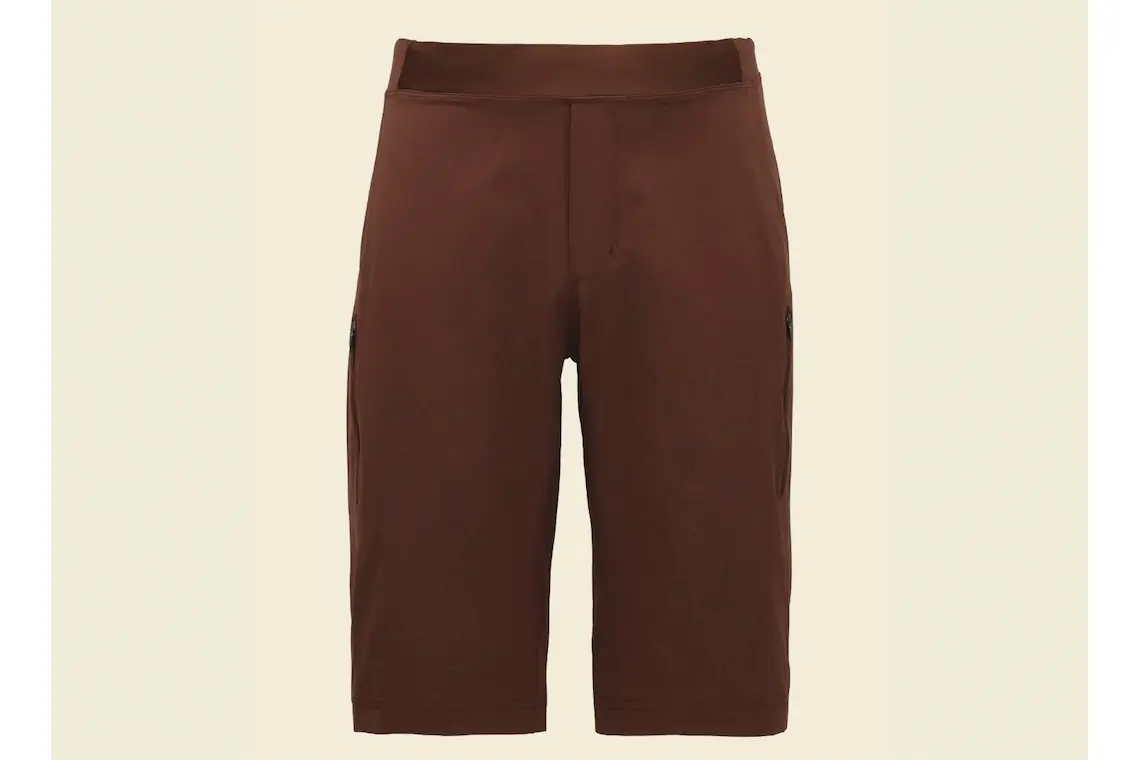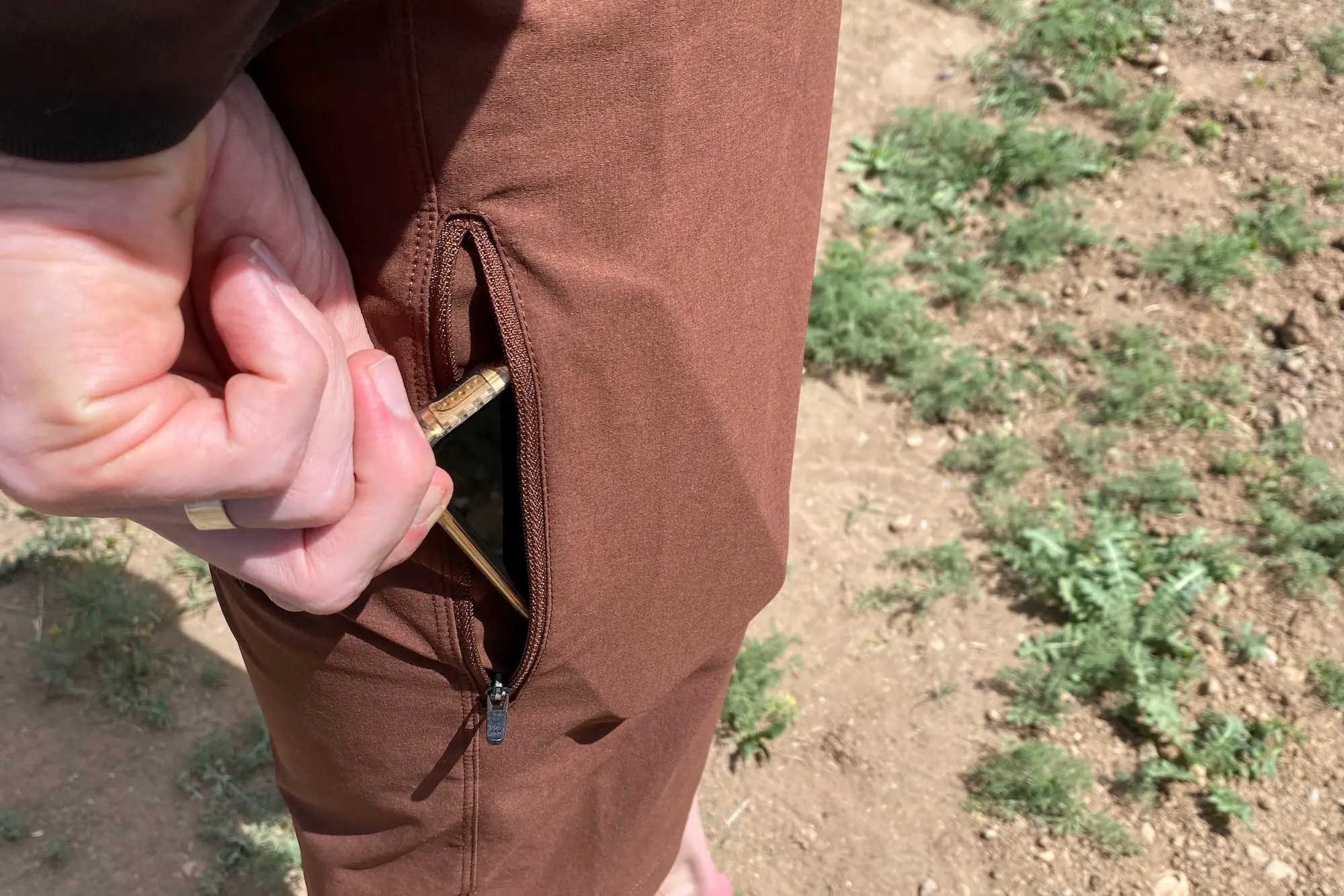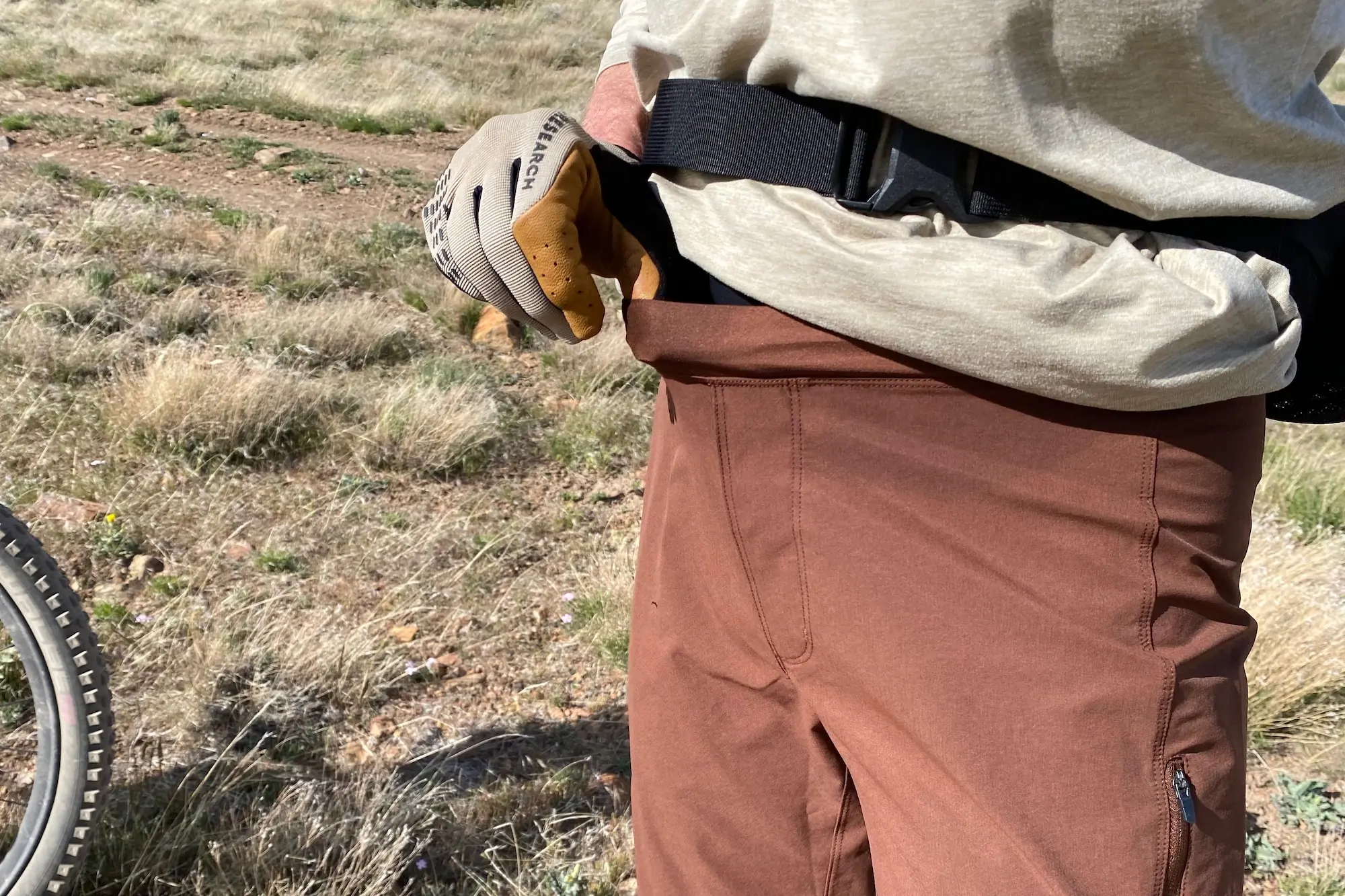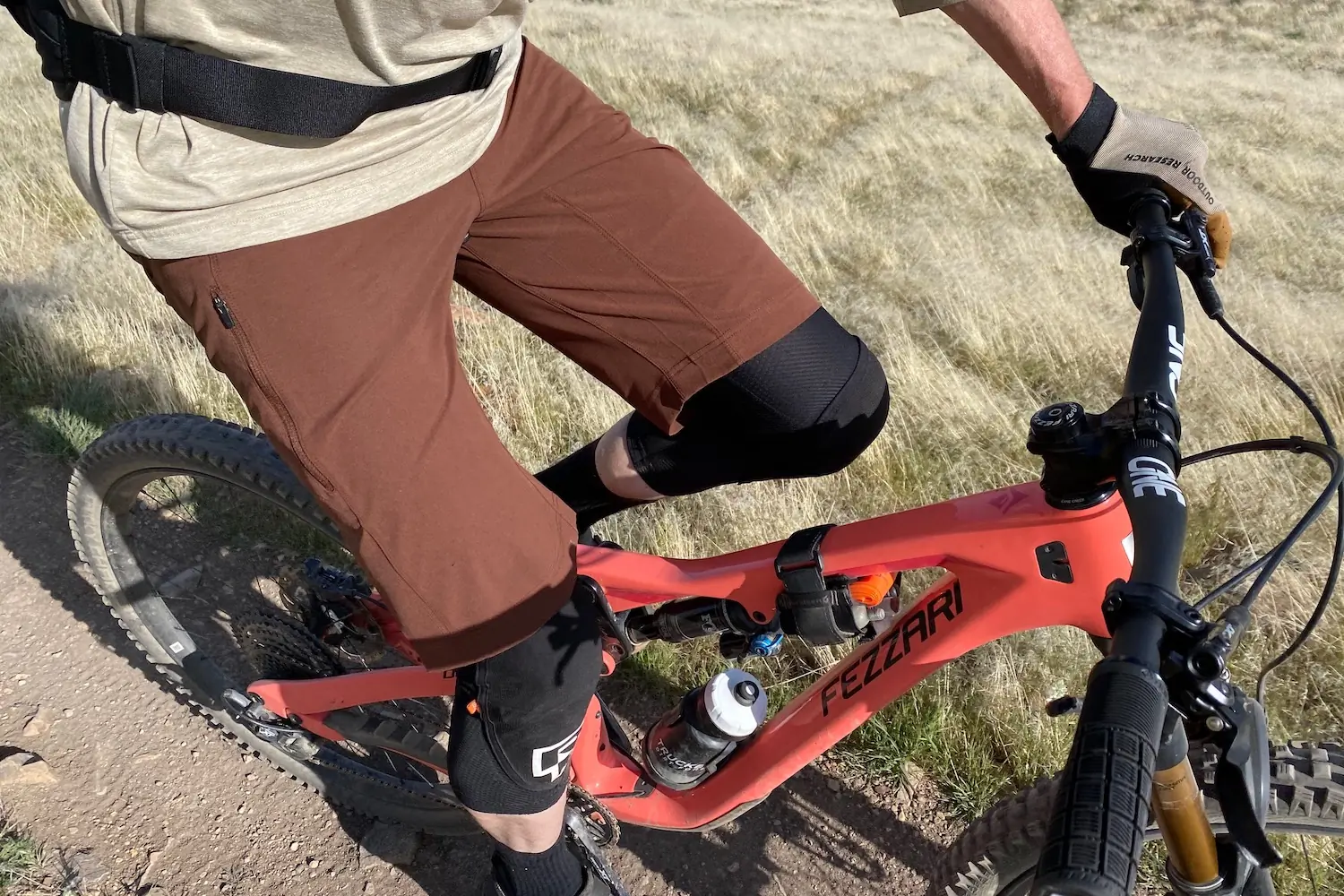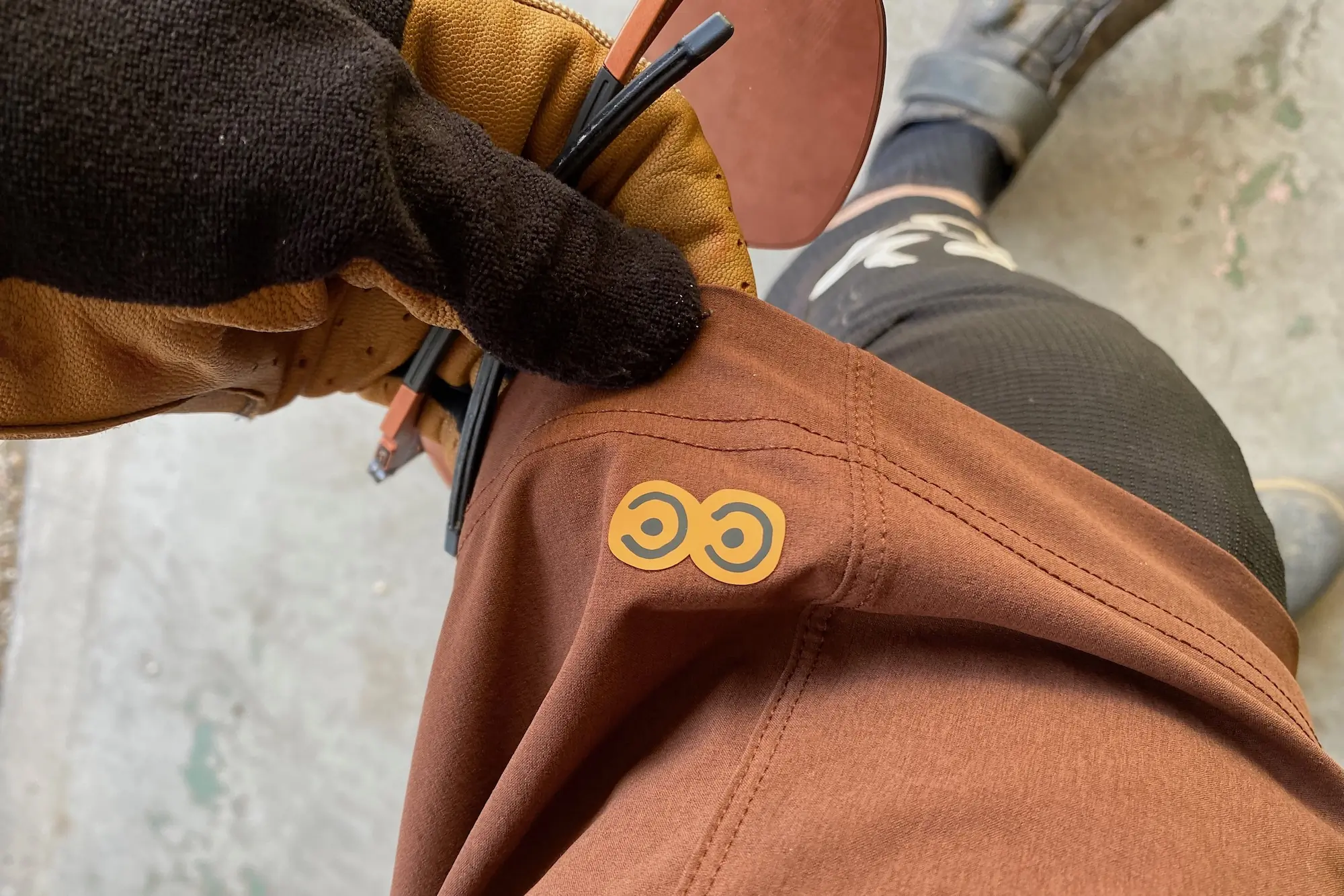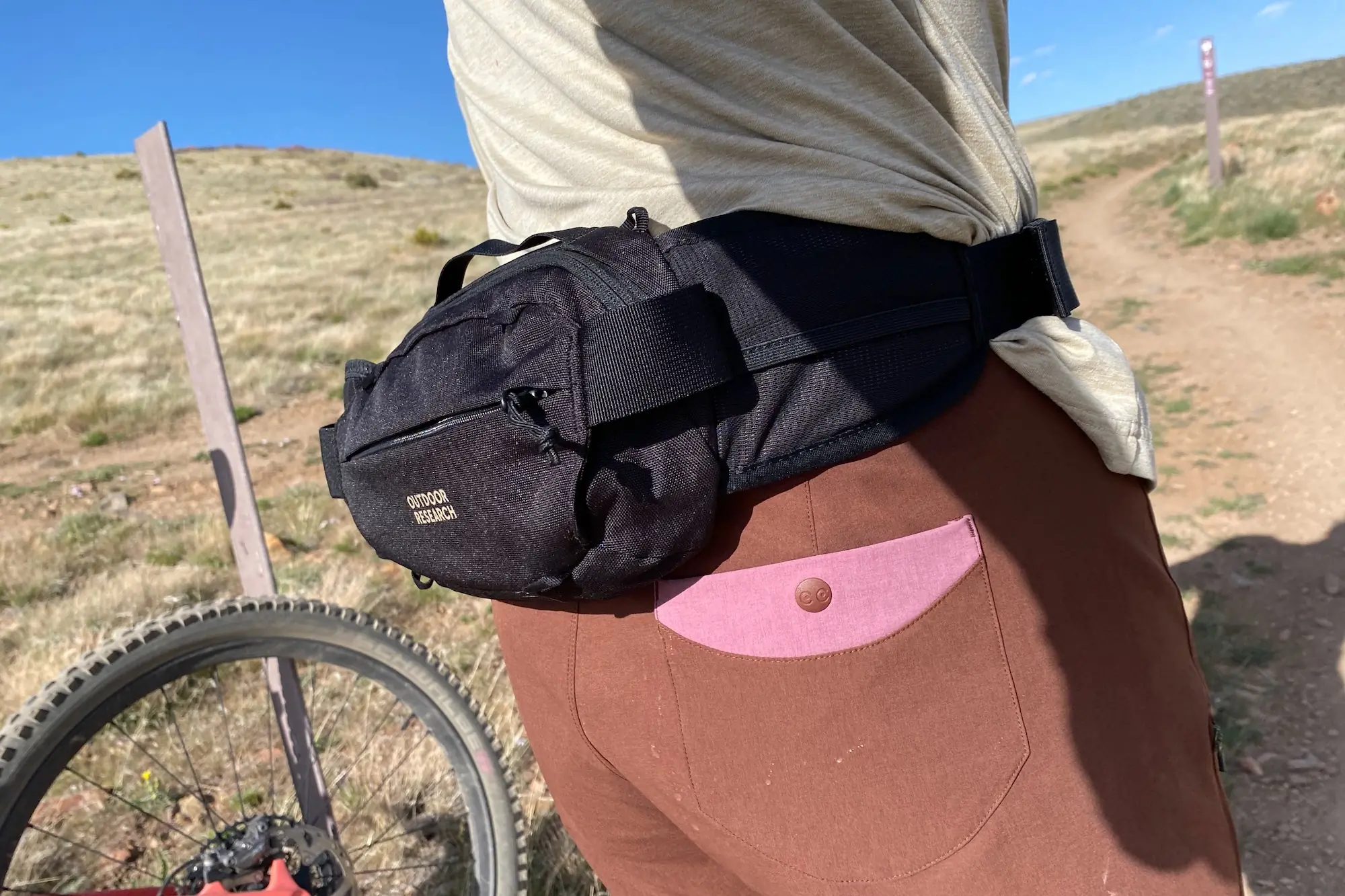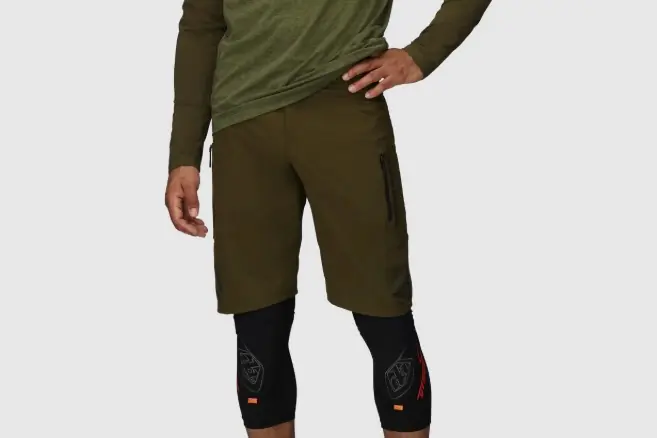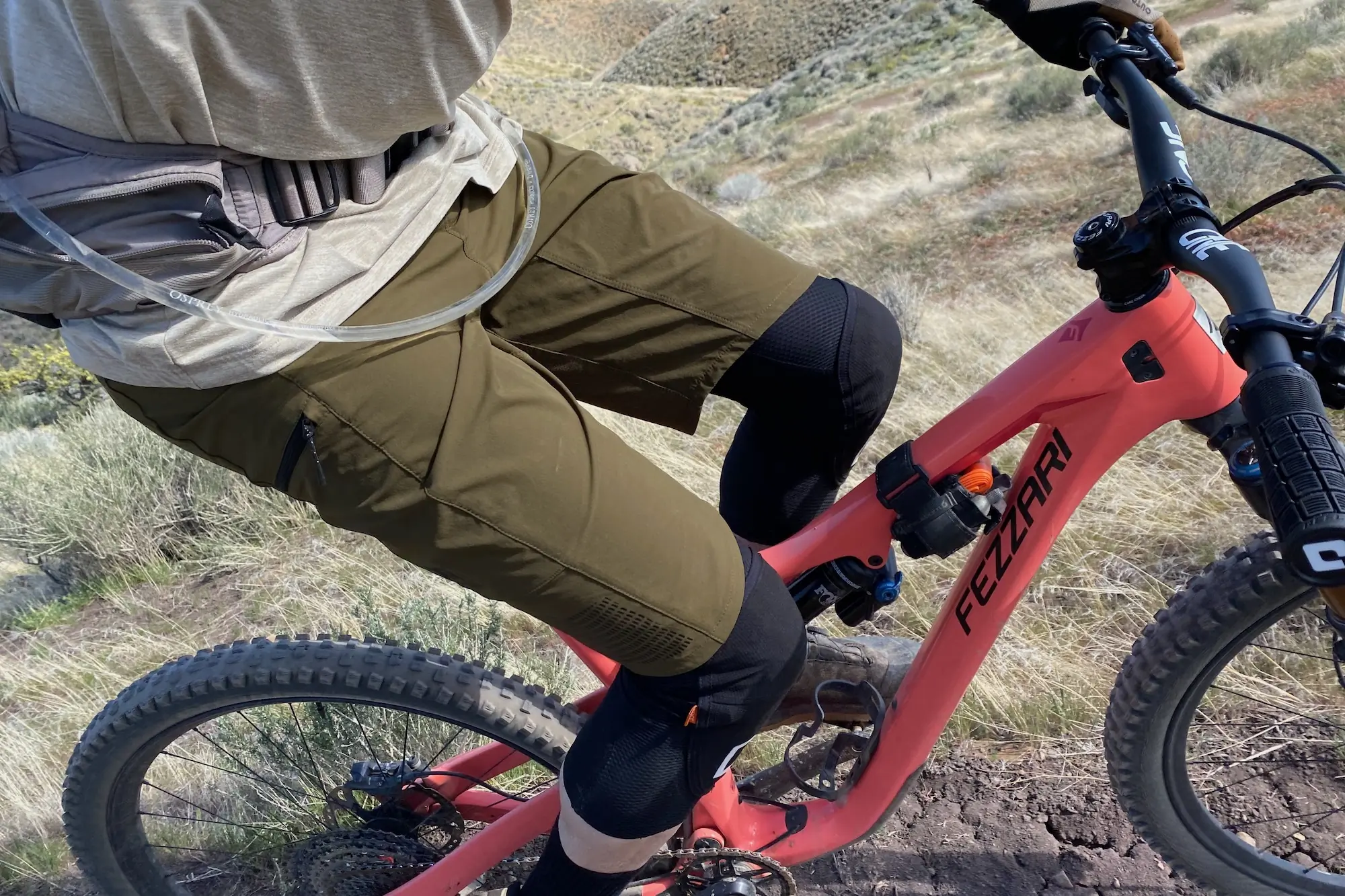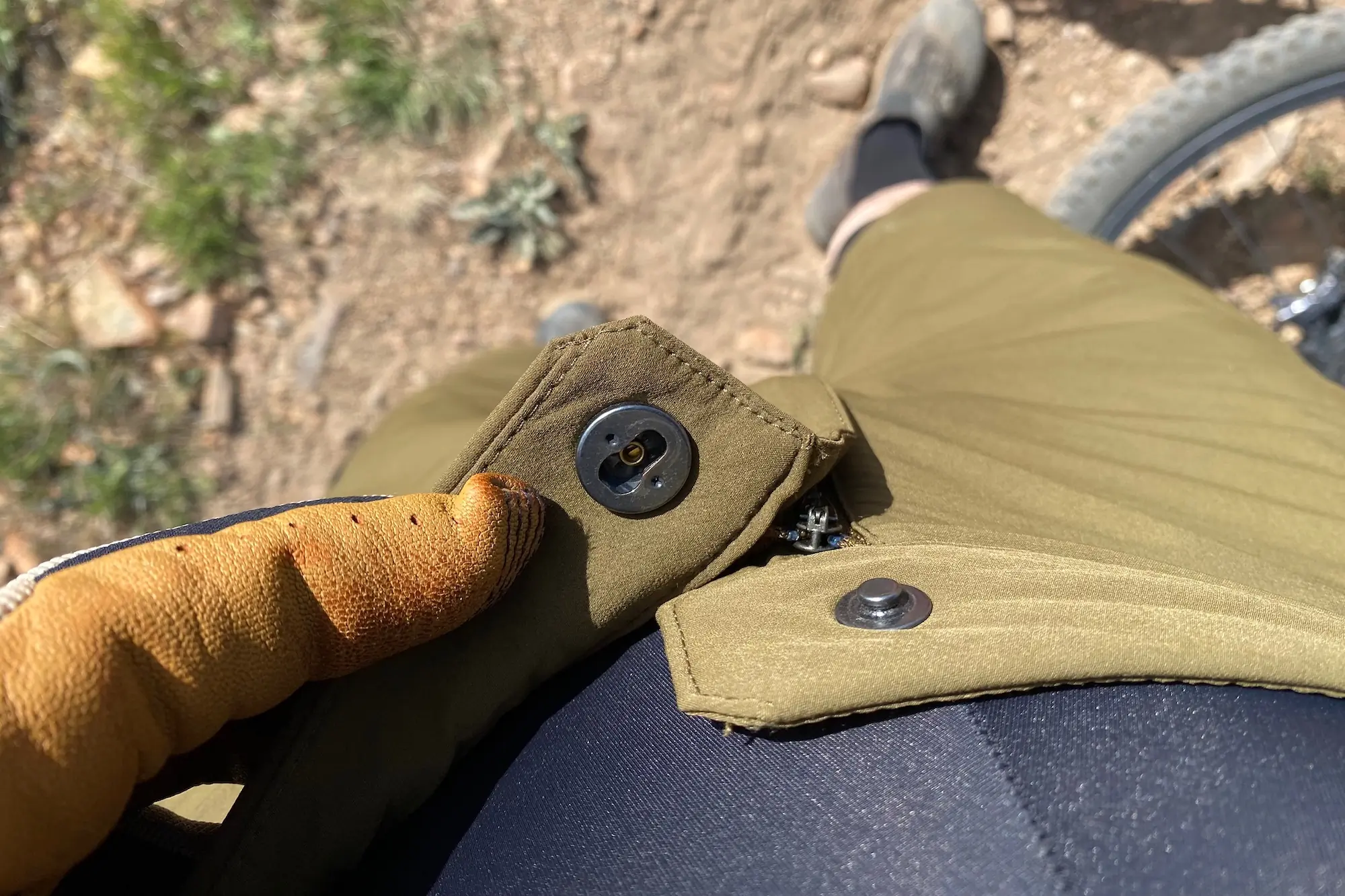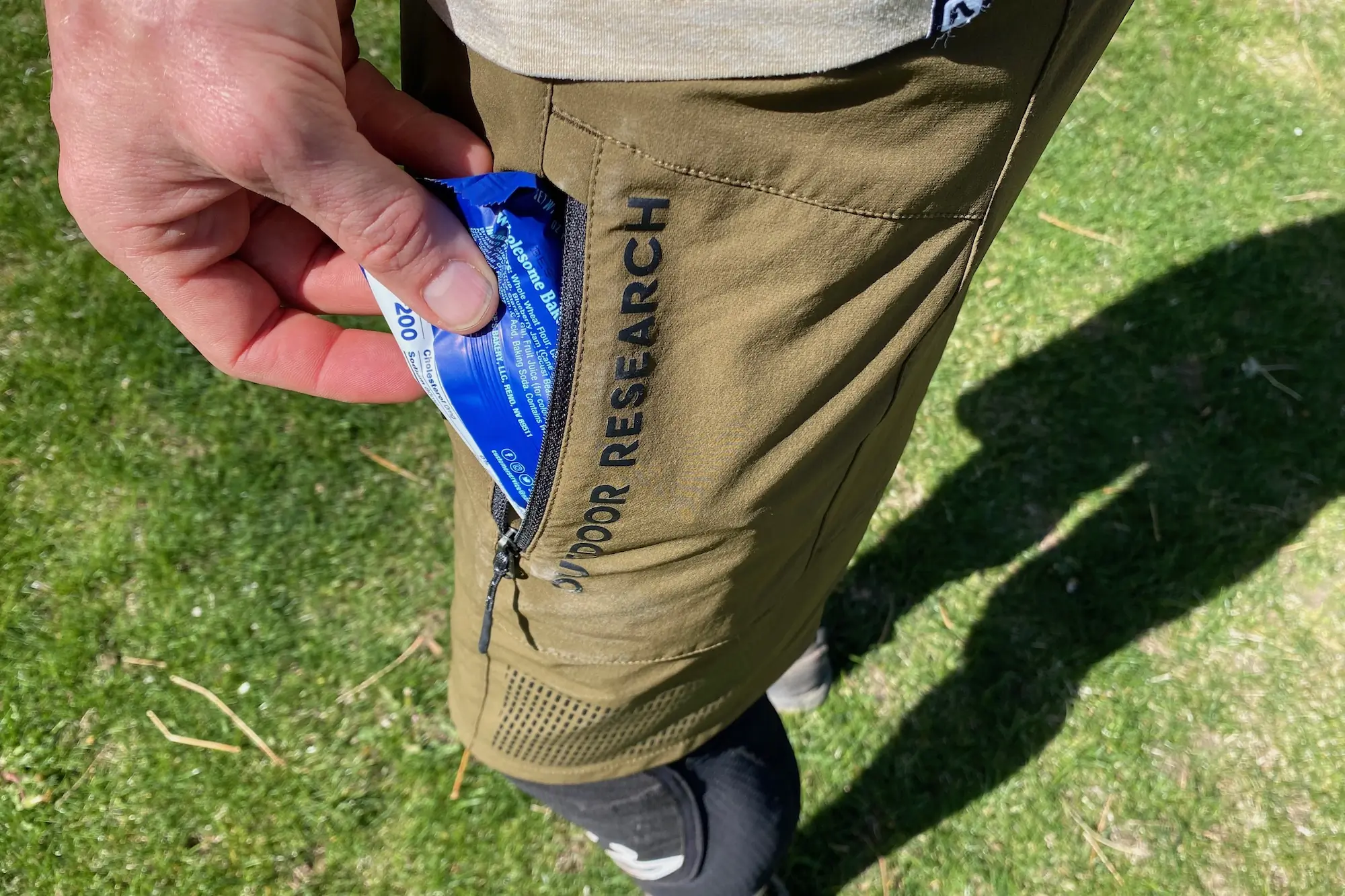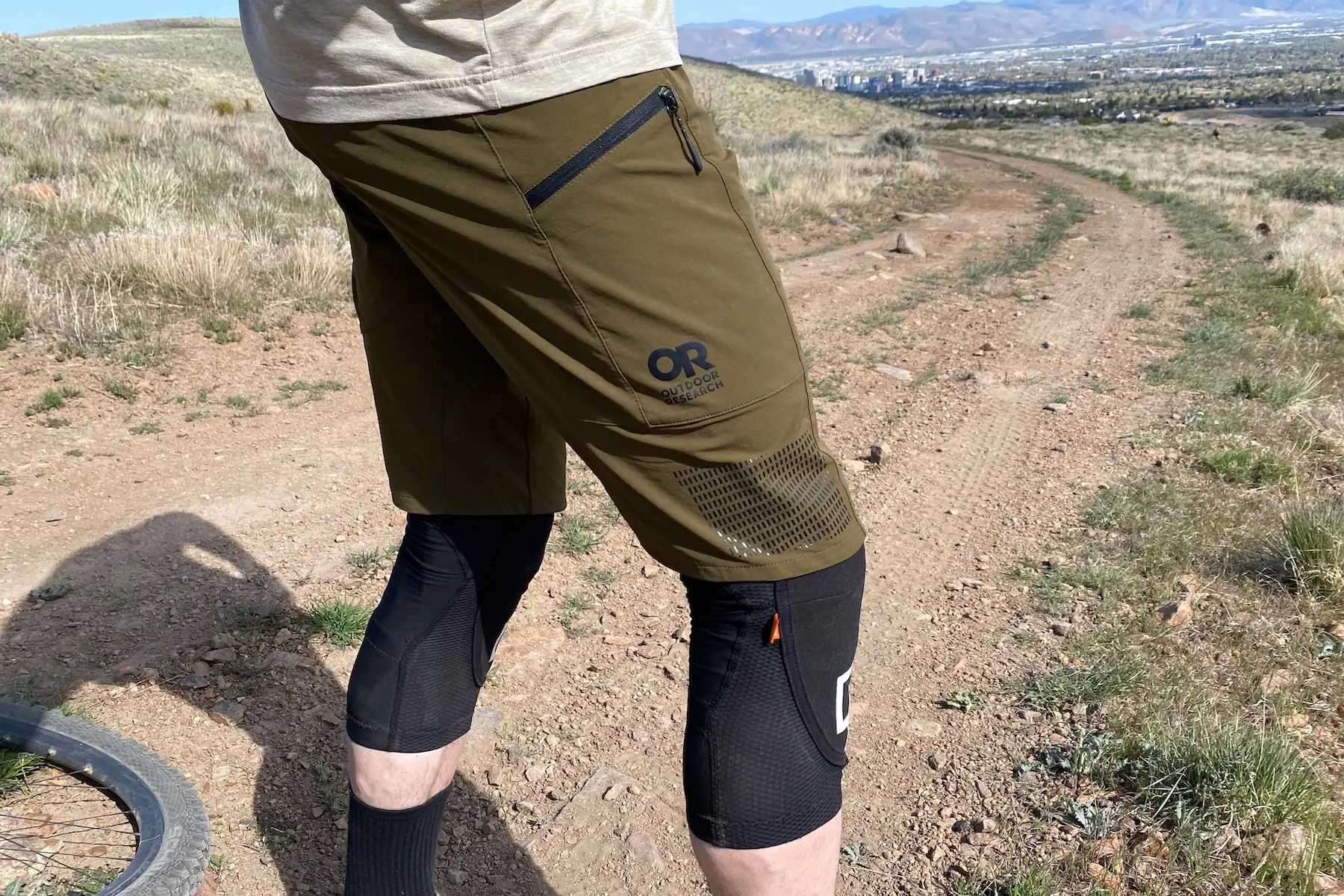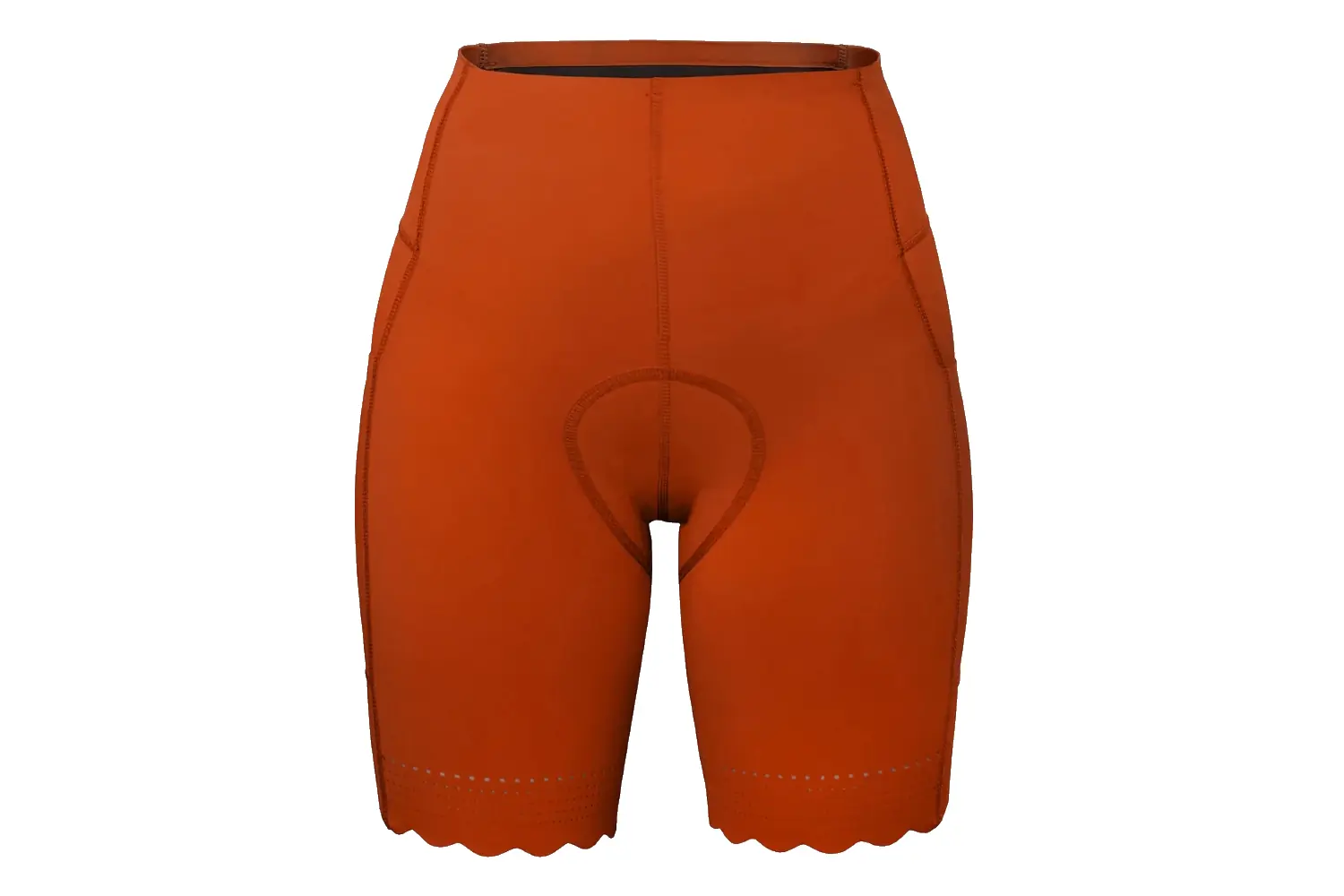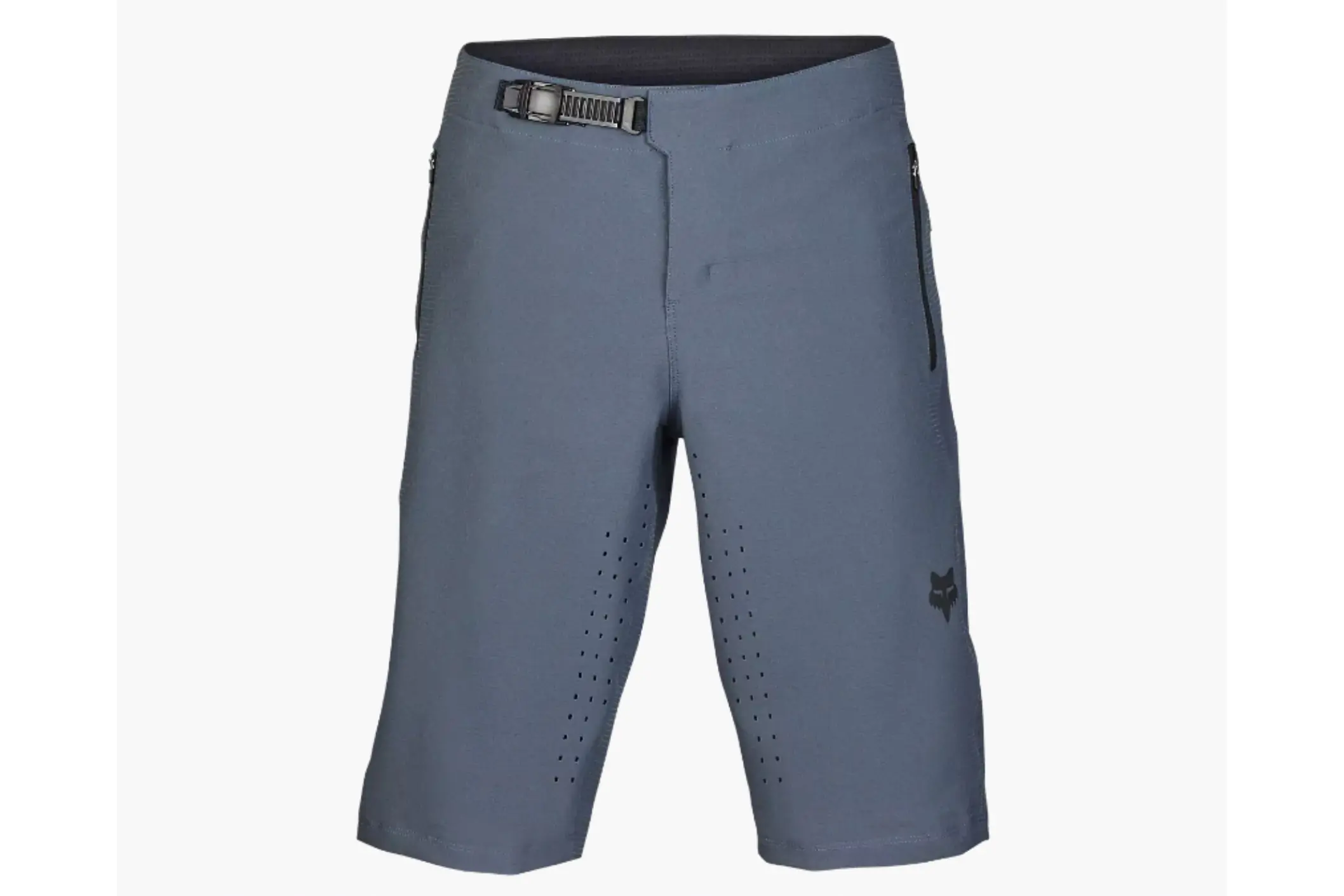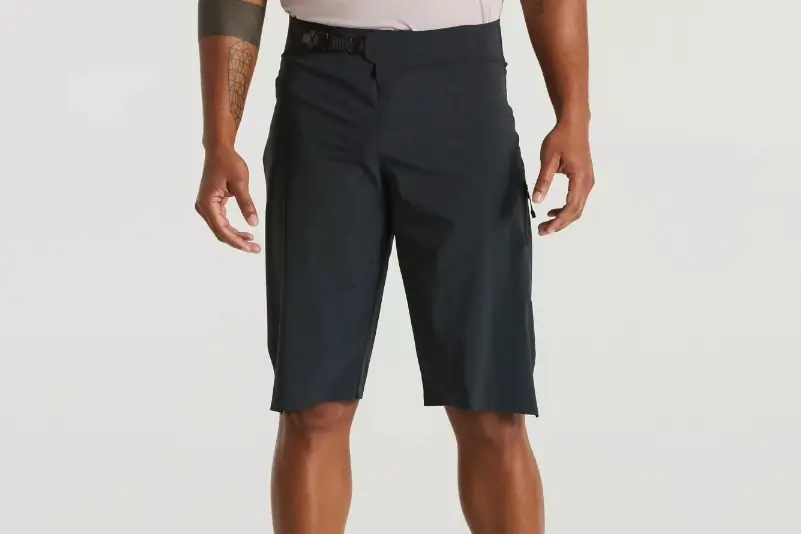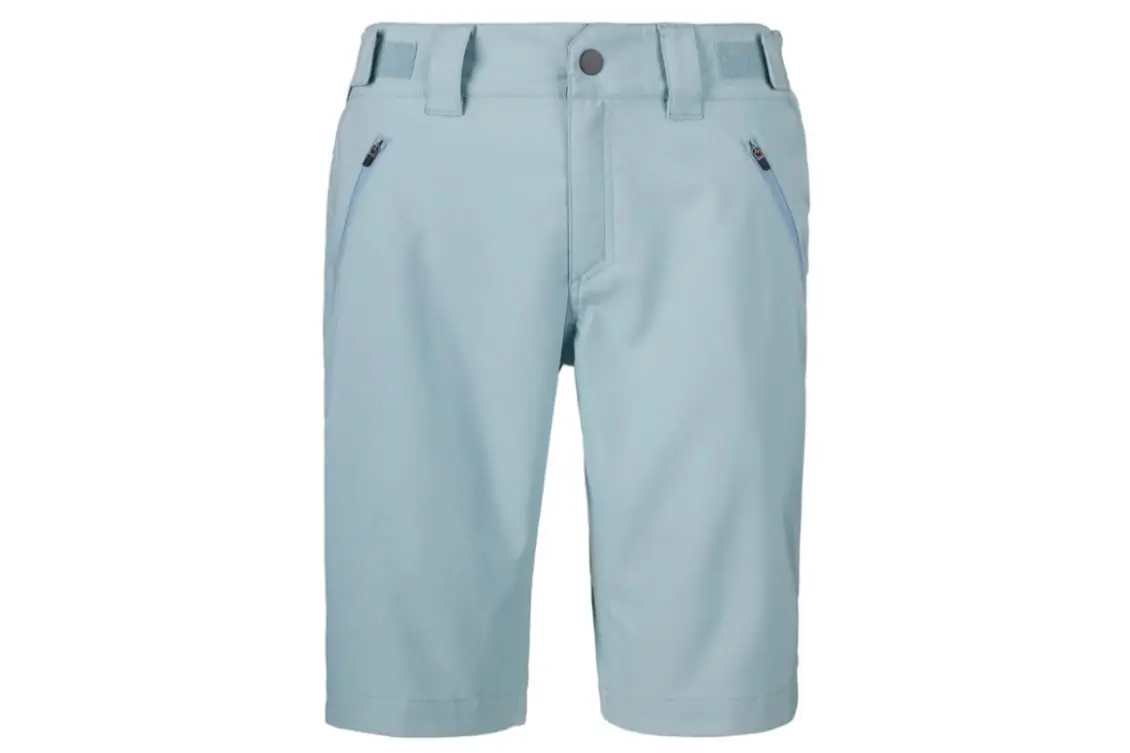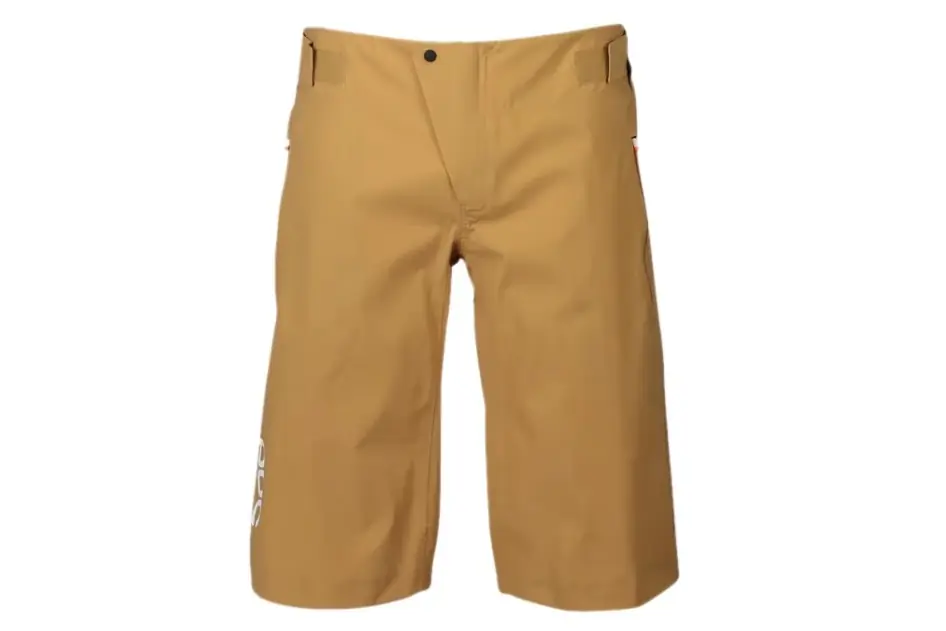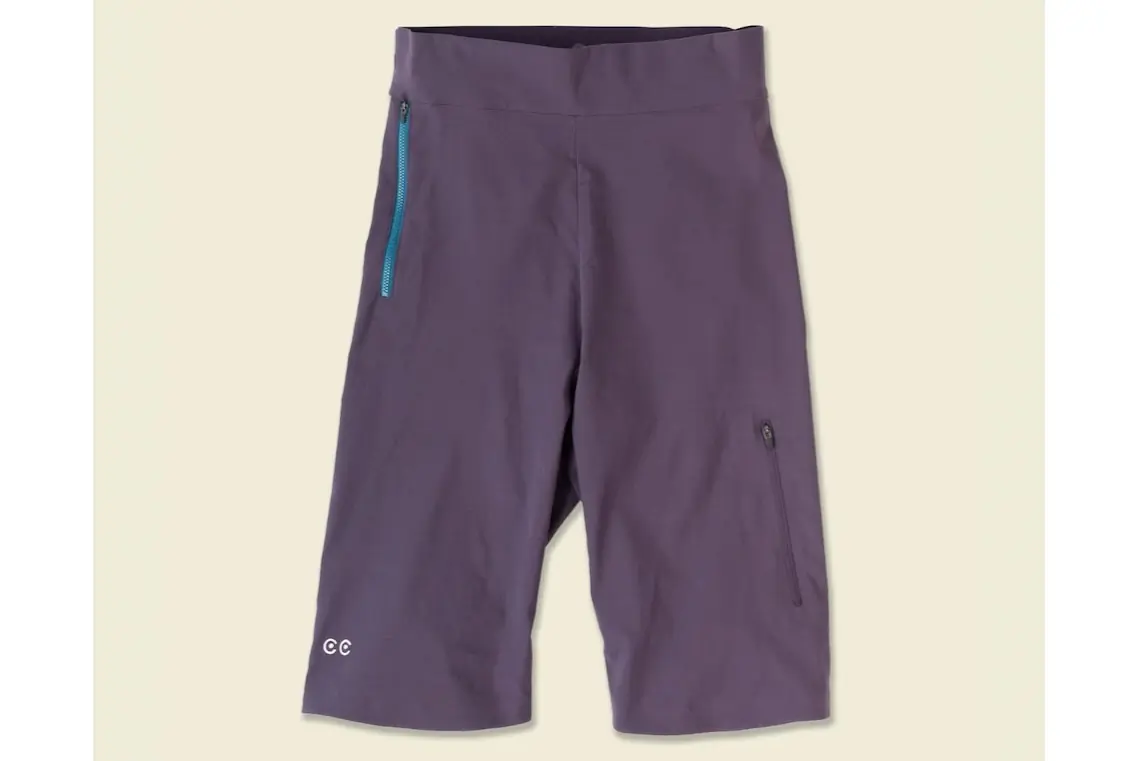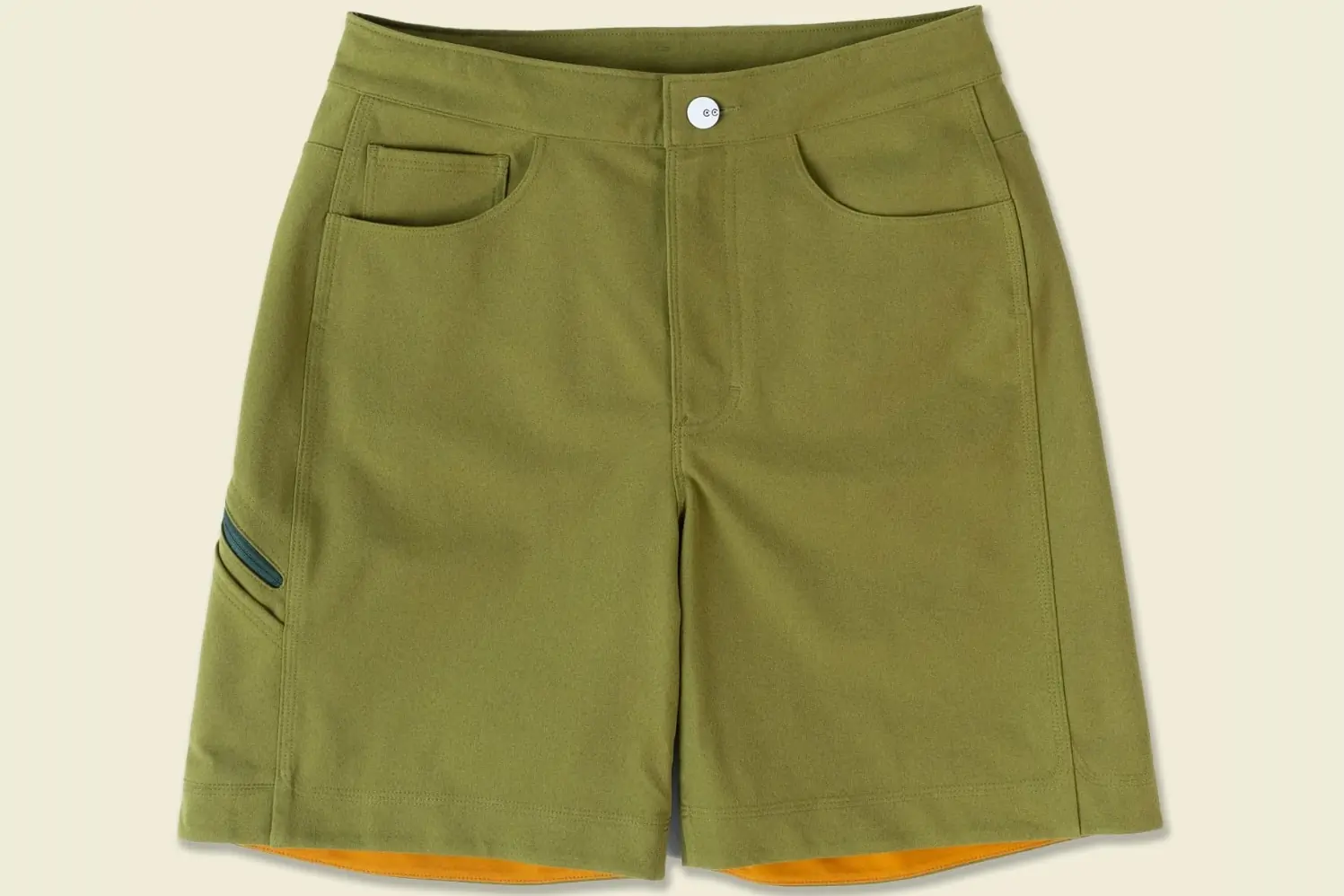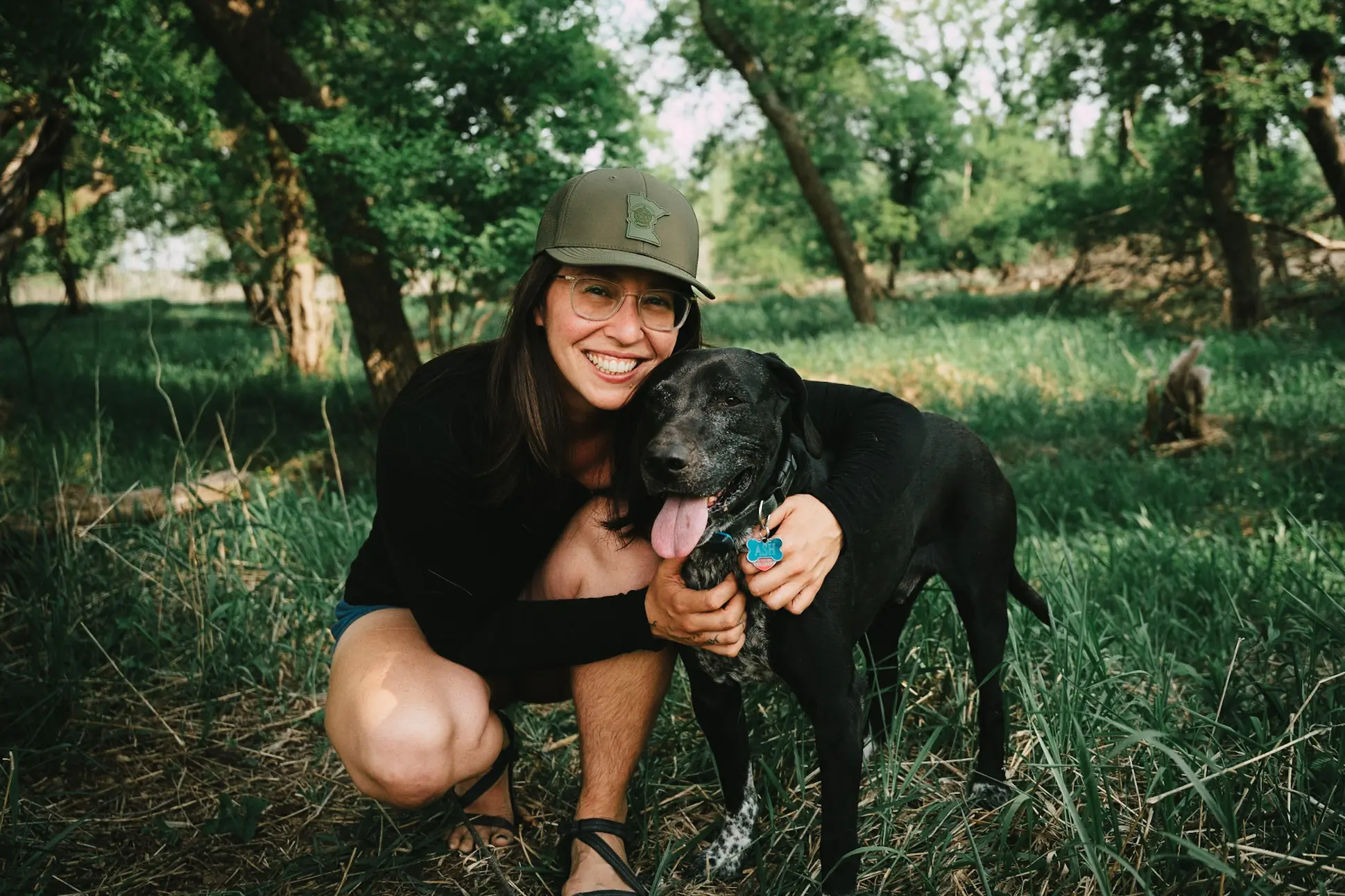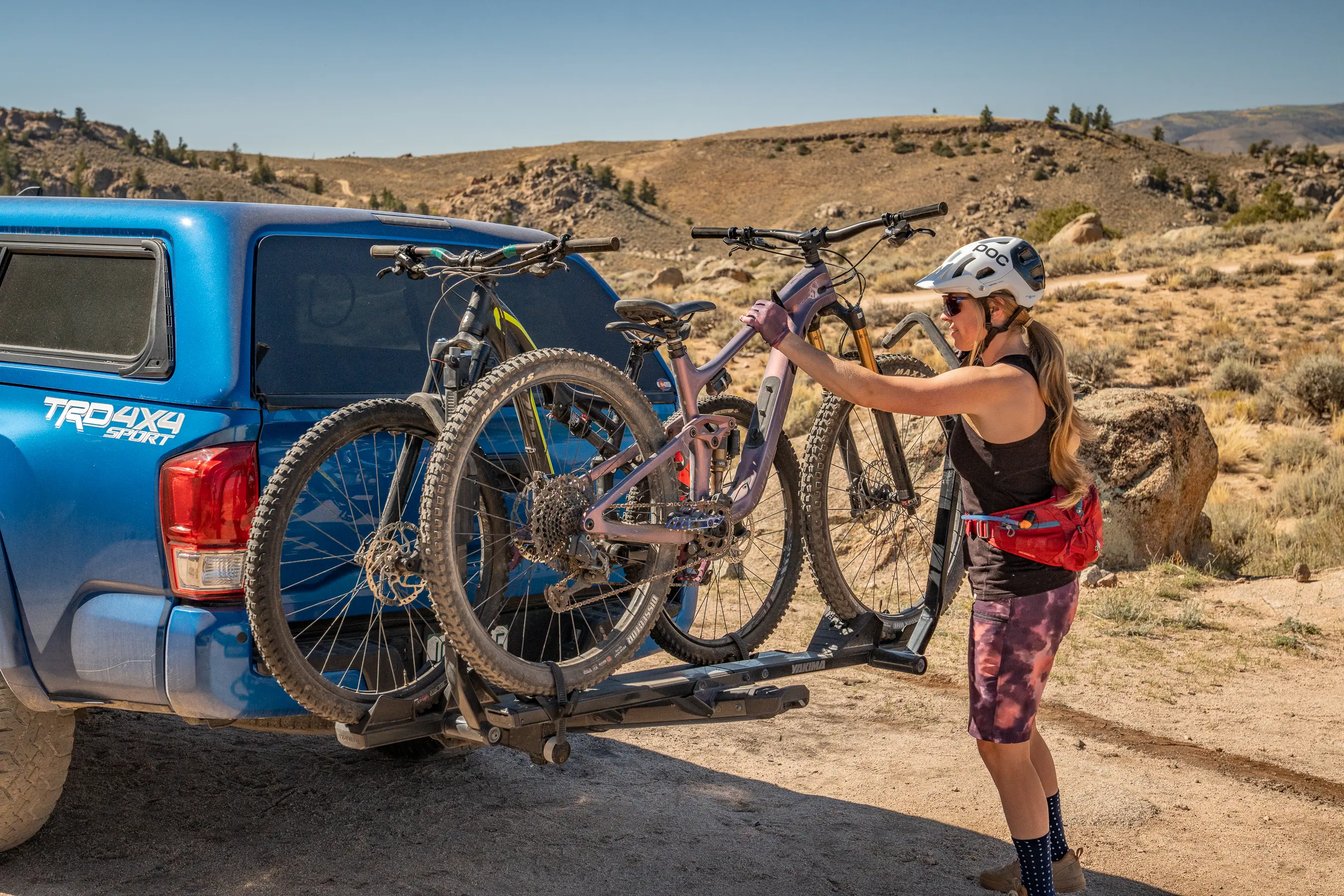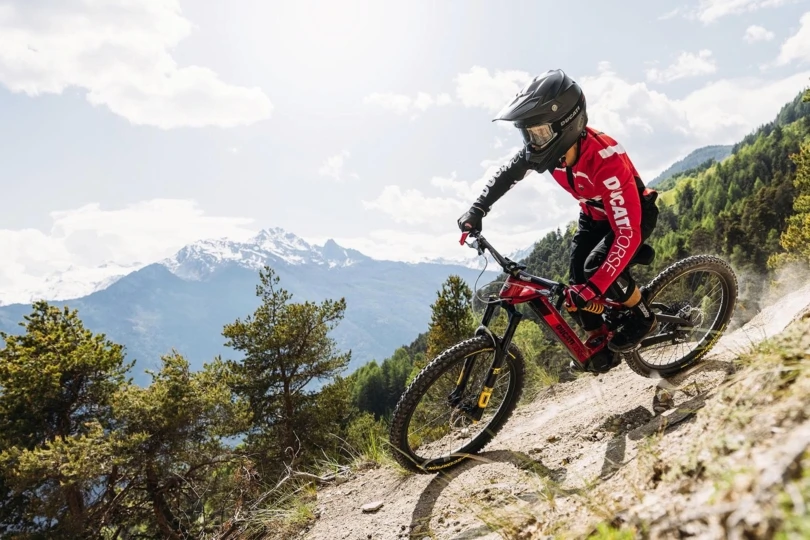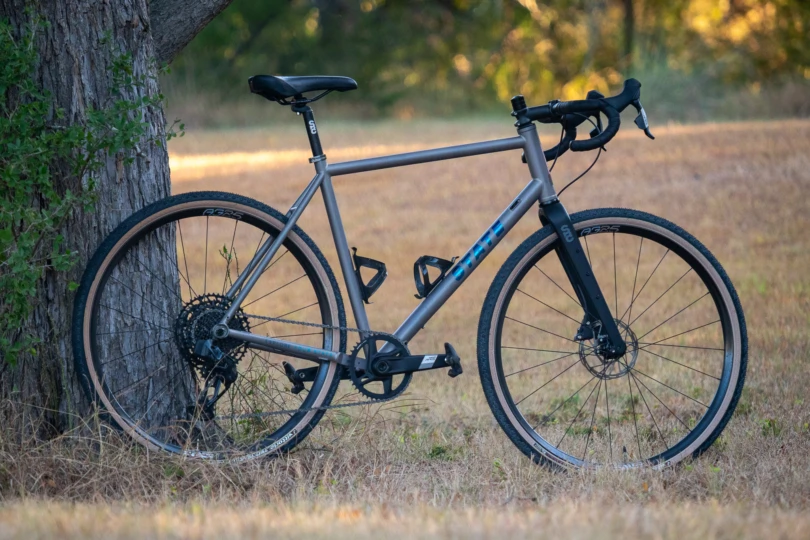A quality pair of mountain bike shorts is the core of your riding kit. The best mountain bike shorts look good but fit comfortably, provide protection, breathe well, and allow unrestricted movement and easy pedaling. While spandex shorts were once dominant in mountain biking, baggy shorts are by far the most common because they provide a variety of benefits for most riders.
These days, mountain bike shorts are designed to meet the demands of all types of riding and riders, from cross-country to downhill, and that includes more options than ever made specifically for women. Gone are the days when women had to make do with scaled-down men’s shorts. To help, we gathered a diverse selection of the best models on the market to test and compare side by side.
Our experts spent months testing the 14 pairs of shorts included here while analyzing important factors like materials, design, fit, comfort, pedal-friendliness, breathability, pockets, and style, switching frequently between models for direct comparison. After hundreds of hours and thousands of miles, we narrowed in on our favorites and those that excel in specific conditions and uses.
Editor’s Note: This guide was refreshed on December 16, 2025, to include women-focused advice and product highlights.
Before we jump into the selections, one note: Many of the baggy shorts here do not include chamois. If you choose to ride in baggies, our team highly recommends adding a pair of chamois to wear under them. Chamois will offer soft protection for your bottom over your saddle.
The Best Mountain Bike Shorts of 2025
Best Overall Mountain Bike Shorts for Women
Shredly Limitless 11″ – Stretch Waistband High-Rise Short
9/10 RatingPatagonia Dirt Roamer Shorts
- Material: 4-way stretch 86% polyester/14% spandex
- Inseam length: 12.5"
- Pockets: 2 zippered thigh pockets
- Measured weight: 160 g (size 32)
- Available sizes: Even waist sizes 28-44, 31, and 33
Pros
- Super comfortable
- Lightweight
- Highly breathable and quick-drying
- Welded seams
- Good pockets
Cons
- Moderately expensive
Shredly Limitless 11″ – Stretch Waistband High-Rise Short
- Inseam: Varies by size, falls above knee (size 4 is 10.5″, for example.)
- Pockets: 2 front pockets, 1 zippered pocket, 1 snap-closure pocket
- Liner: Not included
- Material: Recycled polyester-spandex blend
- Waistband: Elasticized with mid-rise zipper and double-snap closure
- Size range: XS-3XL (00-24)
Pros
- Unique, eye-catching patterns
- Waistband moves with you and doesn’t bunch or open on-the-go
- Large size range with tailored inseam lengths
Cons
- Not the warmest or longest short if you need more protection from cold weather, the elements, or brush
Velocio Ultralight Trail Short
- Material: Italian milled stretch woven fabric (79% polyamide, 21% elastane)
- Inseam length: 13.5" (size M)
- Pockets: 2 zippered thigh pockets
- Measured weight: 135 g (size M)
- Available sizes: XS-4XL
Pros
- Very lightweight
- Excellent patterning and fit
- Breathable
- Come with a stretchy Arcade belt
- Minimal and subtle branding
- 30-day satisfaction guarantee
Cons
- Expensive
- No built-in waist adjustment
- Heavily articulated cut is less ideal off the bike
Wild Rye Freel Shorts
- Inseam: 12″
- Pockets: 2 hand pockets, zippered thigh pocket
- Liner: No
- Material: 4-way stretch nylon (88% nylon, 12% spandex)
- Waistband: Non-adjustable with belt loops
- Size range: 0-18
Pros
- Comfort and style
- Great pocket placement
- Durable
- Cool patterns
Cons
- Not adjustable at the waist
Curious Creatures Sun Dog Short
- Material: 155 gsm 100% polyester
- Inseam length: 12.5"
- Pockets: 2 zippered thigh, 1 snap rear
- Measured weight: 175 g (size 32)
- Available sizes: Even waist sizes 28 to 40
Pros
- Super-comfortable material, waistband
- Minimalist design
- Good pockets
- Clean look
Cons
- Drawcord waist adjustment
- Moderately expensive
Outdoor Research Freewheel Ride Shorts
- Material: 88% nylon, 12% spandex
- Inseam Length: 12 in.
- Pockets: 2 zippered thigh
- Measured weight: 211 g (size 32)
- Available sizes: Even waist sizes 28 to 42
Pros
- Durable material
- Secure and low-profile waist adjusters
- Well-considered details
Cons
- Not the most breathable
- Limited stretch
Shredly Biker Cham
- Inseam: 7″
- Pockets: Yes, two! They’re large, also
- Liner: Serving as the liner, the pad ranges from 2 mm to 14 mm thick in targeted zones
- Material: Buttery nylon-spandex, OEKO-TEX 100 Certified
- Waistband: High-reaching waistband-free
- Size Range: XS-3XL
Pros
- Beautiful chamois that you can feel good wearing solo or under shorts
- Extremely comfortable waist-free high-reaching upper
- Fabric is super soft and stretchy
- Lots of colors and pattern options
Cons
- Lengthier than other chamois if you prefer a shorter inseam
Fox Defend Bike Shorts
- Material: Recycled 4-way stretch: 86% polyester, 7% elastane, 7% polyamide nylon
- Inseam Length: 13.25"
- Pockets: 2 zippered hand pockets and 1 zippered thigh pocket
- Measured Weight: 332 g (size 32)
- Available Sizes: Even waist sizes 28 to 40
Pros
- Tough fabric for aggressive riding
- Clean aesthetic
- Long inseam prevents pad gap
- Comfortable
Cons
- Heavier weight
- Not super breathable
Specialized Trail Air Shorts
- Material: Vaporize woven: 86% polyester/14% spandex
- Inseam length: 13.5"
- Pockets: 1 zippered pocket on left thigh
- Measured weight: 162 g (size 32)
- Available sizes: Even waist sizes 28-44
Pros
- Lightweight
- Airy
- Material feels tough but light
- Very pedal-friendly
Cons
- Sizing runs a tad big
- Only one pocket
- No zipper fly
Flylow Lola Short
- Inseam: 11”
- Pockets: 2 hand pockets, 1 side pocket (all zippered)
- Liner: Not included
- Material: Intuitive IQ MTB Stretch fabric
- Waistband: Customizable velcro cinch on each side, interior silicone grip, plus belt loops and a zippered, single-snap closure
- Size range: XS-L (0-12)
Pros
- Three roomy pockets
- Super comfortable, pliable, breathable fabric
- Rather stain resistant, even the light colors
- Baggy design hits the mark for style and freedom of movement
Cons
- XL or plus-sizes not available
- Some riders might prefer a more feminine or athletic fit
Norrøna Fjora Flex1 Short
- Inseam: 15″
- Pockets: 2 zippered hand pockets, zippered thigh pocket with an interior tiny mesh pocket
- Liner: Not included
- Material: Flex1: 50% recycled nylon with reinforced knees and seat and a PFC-free DWR
- Waistband: Higher-reach to cover up backside, double snap and zip closure plus an integrated wide Velcro belt
- Size range: XS-XL
Pros
- Premium coverage for top protection against the elements
- Great choice for long rides or bikepacking
Cons
- Some riders might find the length too much
- Expensive
POC Bastion Shorts
- Material: 3-layer waterproof fabric
- Inseam length: 15" (measured)
- Pockets: 2 zippered hand pockets, 1 zippered rear card pocket
- Measured weight: 215 g (size M)
- Available sizes: S-XXL
Pros
- Waterproof material
- Taped seams
- Long inseam and large leg opening work well with knee pads
- Quality construction
Cons
- Expensive
- Legs are super roomy
- Hand pockets hold contents on top of thigh
- Material is noisy
Curious Creatures Marilyn Short
- Inseam: 12”
- Pockets: 1 zippered side pocket
- Liner: Not included
- Material: 2-way stretch, durable midweight plain-woven nylon (152 gsm), PFC-free DWR finish, Bluesign-approved
- Waistband: Side zipper and single snap (two options for waist width)
- Size range: XS-XL (0-14)
Pros
- Single stretchy side pocket is spacious for a phone, well-placed, and zipper secured
- High waist offers unique feminine cut
- Really light and forgiving textile
Cons
- Not many pockets
- No belt loops might be a downer for some
Curious Creatures Ramble Scramble Short
- Inseam: 7”
- Pockets: 2 hand pockets, 2 back pockets, 1 inset pocket, 1 envelope pocket, 1 small zippered pocket
- Liner: Not included
- Material: 4-way stretch, bio-based (easily recyclable) heavyweight twill polyester (240 gsm), PFC-free DWR, Bluesign-certified
- Waistband: Interior drawcord, zipper and single button closure
- Size range: XS-XL (0-14)
Pros
- Fun, hip style that doubles for everyday summer use
- Ample pockets
- Super stretchy, comfortable fabric
- Unique shorter length
Cons
- Most pockets are not secure for rides (but great for post-ride and everyday use)
- Some riders prefer belt loops
- Hits mid-thigh or higher, and some bikers might prefer more leg protection
Mountain Bike Shorts Comparison Chart
| MSRP | Inseam Length | Pockets | Size Range | |
|---|---|---|---|---|
| Patagonia Dirt Roamer Shorts | $129 | 12.5 inches | 2 | 28 – 44 |
| Shredly Limitless 11″ Short | $108 | 11 inches (8) | 4 | 0 – 12 |
| Velocio Ultralight Trail Short | $159 | 13.5 inches (Medium) | 2 | XS – 4XL |
| Wild Rye Freel Shorts | $139 | 12 inches | 2 | 0 – 14 |
| Curious Creatures Sun Dog | $125 | 12.5 inches | 3 | 28 – 40 |
| Outdoor Research Freewheel Ride | $115 | 12 inches | 2 | 28 – 42 |
| Shredly Biker Cham | $98 | 7 inches | 2 | XS – 3XL |
| Fox Defend | $130 | 13.25 inches | 3 | 28 – 40 |
| Specialized Trail Air | $130 | 13.5 inches | 1 | 28 – 44 |
| Flylow Lola Shorts | $95 | 11 inches | 3 | 0 – 12 |
| Norrøna Fjora Flex1 Short | $159 | 15 inches | 3 | XS – L |
| POC Bastion | $200 | 15 inches | 3 | S – L |
| Curious Creatures Marilyn Short | $130 | 12 inches | 1 | 0 – 14 |
| Curious Creatures Ramble Scramble Long | $139 | 11.5 inches | 6 | 28 – 40 |
How We Tested the Best Mountain Bike Shorts
The GearJunkie testing team is made up of amateur to expert road cyclists, bikepackers, mountain bikers, and racers. We’ve ridden cross-country and steep alpine trails all over the West, including in competitions, while bikepacking across the Rockies, and on self-supported trips like the 142-mile Kokopelli Trail.
The team at GearJunkie takes testing and reviewing outdoor gear very seriously. We feel very fortunate to be in a position that allows us to spend time outside on the bike while analyzing products and providing insight that may help people make more informed purchase decisions.
Our men’s mountain bike shorts review author, Jeremy Benson, has been professionally testing and reviewing mountain bikes, accessories, and apparel for over 8 years. In that time, he has tested more than 30 different pairs of mountain bike shorts, including the 14 models in this review.
Benson is an avid mountain bike rider and racer who started riding as a youth in the early ’90s. He’s spent the past 23 years living in the Sierra Nevada mountains in and around Lake Tahoe, Calif., obsessively riding the many hundreds of miles of nearby world-class singletrack, much of which is accessible from right out the door.
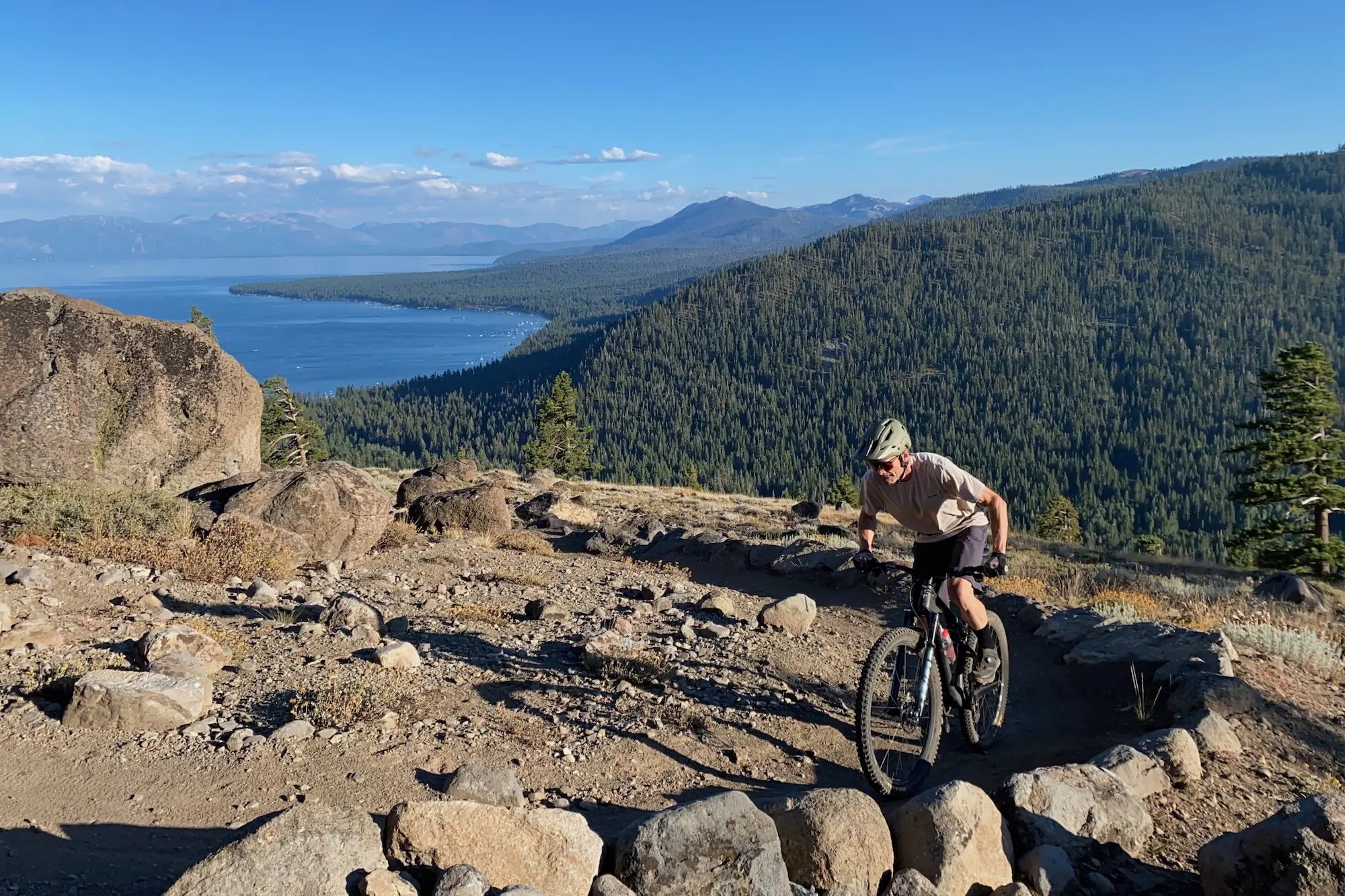
Benson enjoys all styles of riding, from lung-busting XC and gravel races to massive backcountry epics, shuttle runs, steep skidders, and long hike-a-bikes, you name it. The amount of time he spends in the saddle makes him particularly tough on and critical of the gear he uses, and he’s always searching for the best products to enhance his experience and improve his performance out on the trails.
Years spent testing all kinds of gear helped him develop a keen ability to analyze and scrutinize products and convey his findings in reviews. Benson has also contributed to several other buyers’ guides, including mountain bike helmets and the best mountain bike shoes, as well as cycling sunglasses and hitch bike racks for transporting your rides.
Our women’s testing was led by Senior Editor Morgan Tilton and supported by a team of riders ranging from casual trail enthusiasts to competitive racers and bikepackers. To point, Tilton put in over 47,000 vertical feet of climbing while testing the mountain bike shorts in the past year. Aside from testing bike gear, she helps manage the gear-testing flock.
Collectively, our testers logged thousands of miles and tens of thousands of vertical feet of climbing across the Rockies, Sierra Nevada, Oregon, and Colorado, riding through sun, wind, rain, and even hail. Women’s mountain bike shorts were evaluated for durability, fit, ease of movement, protection, fabric feel, breathability, and functionality, both while riding and during off-bike moments like loading up the car or setting up camp after a long day.
Years spent testing all kinds of gear helped him develop a keen ability to analyze and scrutinize products and convey his findings in reviews. Benson has also contributed to several other buyers’ guides, including mountain bike helmets and the best mountain bike shoes, as well as cycling sunglasses and hitch bike racks for transporting your rides.
While testing, we focused on important performance characteristics like fit, pedal-friendliness, ventilation/breathability, and pocket design. Each model was worn with and without knee pads to test compatibility, and friends were asked to comment on the style. After hundreds of hours and thousands of miles in the saddle, we honed in on our favorites and those that excel in specific areas compared to the rest.
Beyond our team’s experience, we also considered the most popular, highly rated, acclaimed, and bestselling shorts on the market, as well as a broad range of price points, features, and styles to meet the needs of various types of bikers.


Buying Advice: How to Choose Mountain Bike Shorts
With so many brands and models of mountain bike shorts on the market, finding the right pair can be tricky. There are a number of factors to consider when choosing your next pair of shorts, and we’ll break down some of the most important elements of mountain bike shorts below. Getting the right fit is the most important, but you’ll also want to get shorts that suit your riding style, personal style, weather conditions, and budget.
What Type of Riding Do You Do?
As there are many different styles of mountain biking, there are just as many different mountain bike shorts to suit the needs of different riders. It stands to reason that a person who rides cross-country has different needs and wants from their shorts than someone who rides chairlifts at the bike park all day.
As such, manufacturers design shorts for the various sub-genres of mountain biking using different materials, inseam lengths, and designs. If you participate in several different styles of riding, it may make sense to have several pairs of shorts that you can switch between. Likewise, different seasons have different demands, and having shorts of different weights or weather resistance may be helpful when the temperature or weather changes.
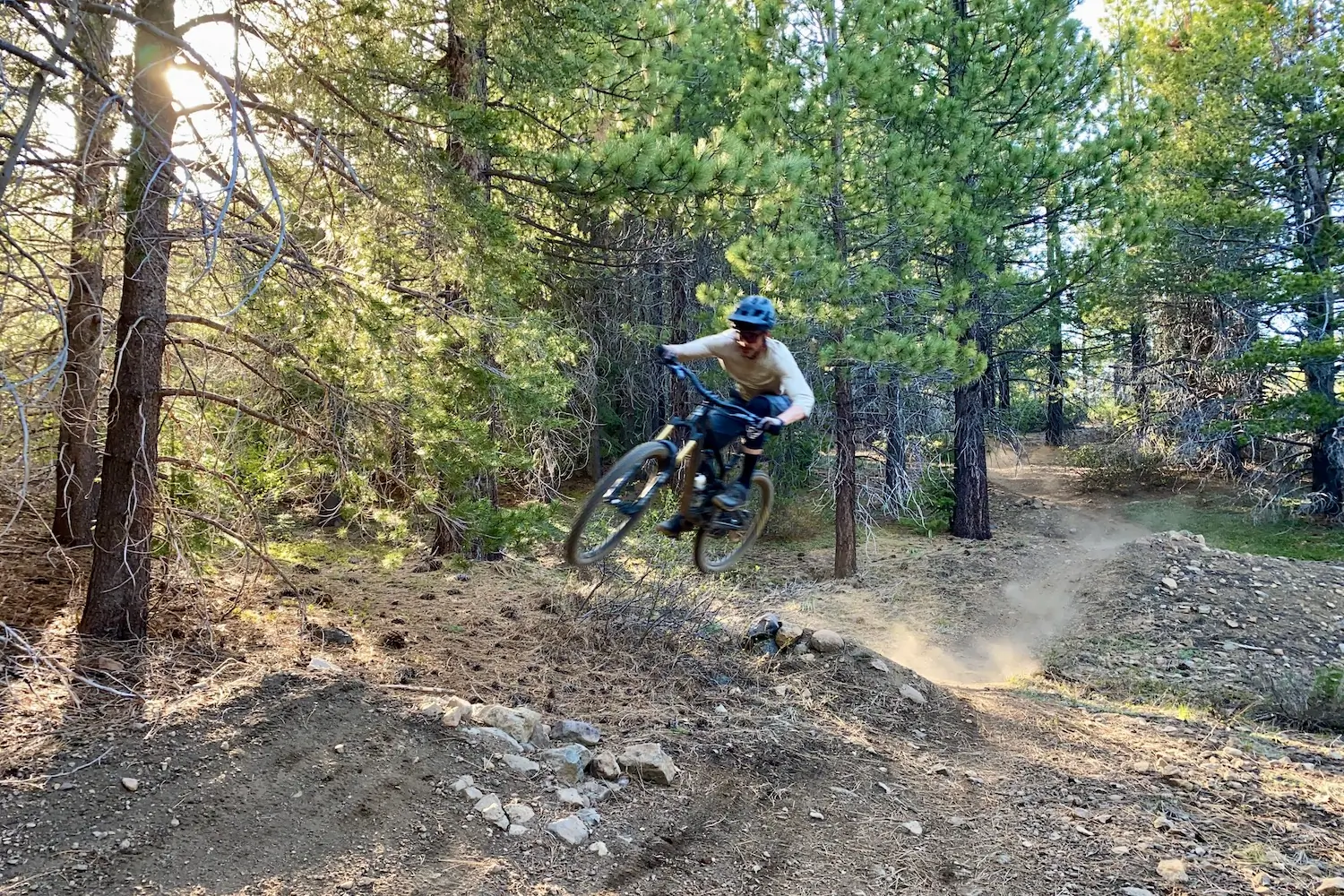



While many cross-country riders, and especially racers, may prefer to wear Lycra for performance reasons, there are baggy shorts that are well suited to high-efficiency, high-output XC riding. Generally speaking, cross-country riders typically opt for shorts that are lightweight, breathable, slim-fitting, and super pedal-friendly, which often feel like you aren’t wearing baggy shorts at all.
For trail riding, most riders still prioritize pedal-friendliness and may gravitate toward lightweight shorts, though many prefer a slightly longer inseam to work with light-duty knee pads and slightly more robust fabrics for increased durability.
Gravity-oriented riders who spend time riding DH at the bike park or smashing enduro laps generally prioritize heavy-duty fabrics for added protection and durability, as well as longer inseams and looser fits that play well with knee pads and/or protective undershorts.
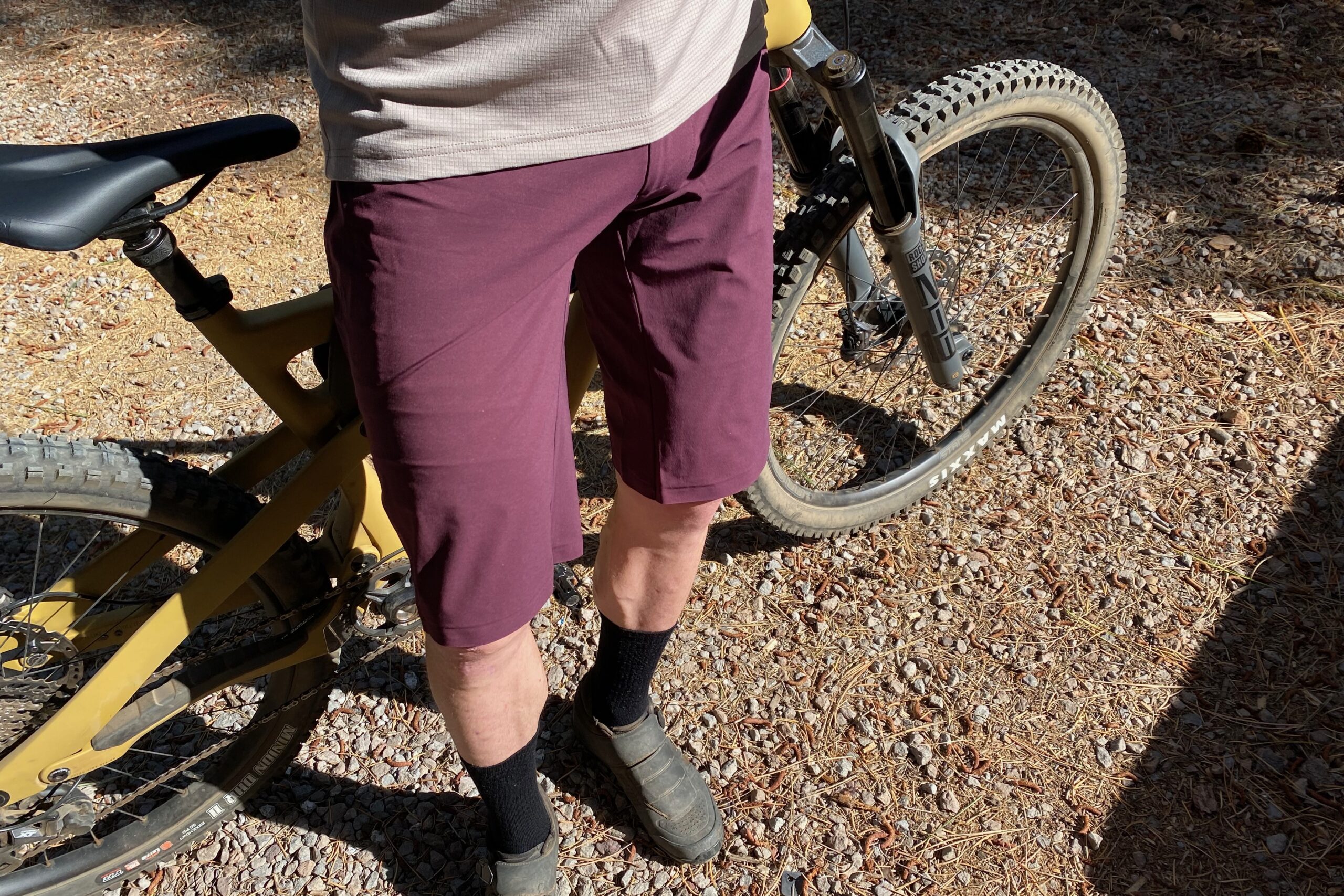

Getting the Right Fit
As with any article of clothing, getting mountain bike shorts that fit right is one of the most important aspects of the purchase process. The better your shorts fit, the more comfortable they will be, and the less they will distract you from the important task of riding your bike.
Shorts that fit well typically fade into the background and go virtually unnoticed while riding. Too tight, and they put pressure on your abdomen or restrict your movement. Too loose, and they can slip down and require frequent adjustment while riding. If you wear padded liner shorts, or a chamois, it is also important to consider them, as the shorts will need to fit over those as well.
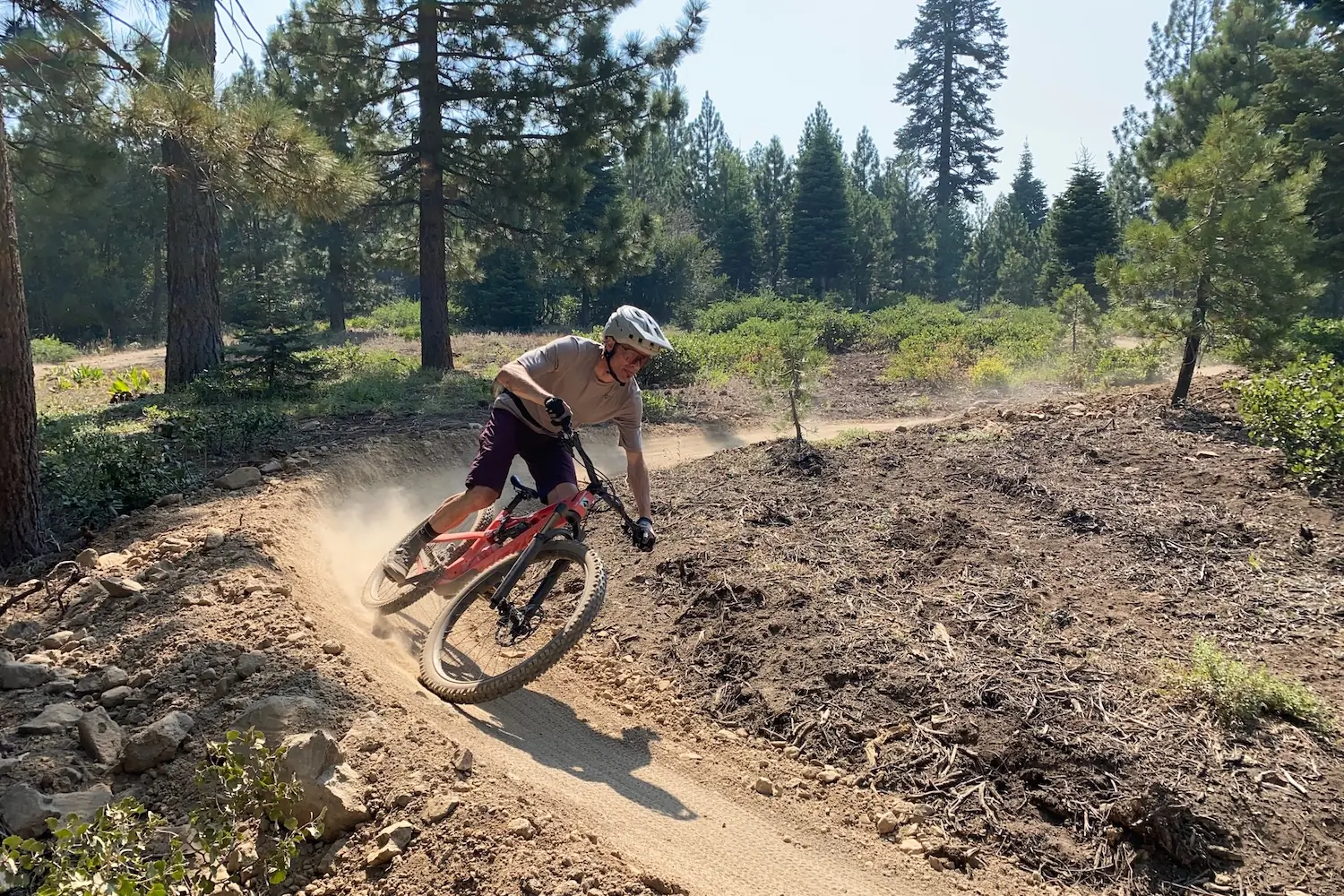



Waist size is the primary factor in the fit equation, and most shorts come in a range of sizes to fit the most typical waist sizes. It varies by brand, but many offer their shorts in numerical waist sizes that typically make it easy to find the size that’s closest to your waist measurement in inches.
Other brands offer their shorts in what is known as categorical sizes — small, medium, large, etc. — with each size intended to fit a small range of waist sizes. With categorical sizing, always be sure to check a brand’s size chart to find where you fall in their size range. For women, most brands offer a size run from at least size 0 to size 18.
Be sure to double-check the size chart for each pair of shorts you consider buying, and to measure yourself before making an order or stop by a retailer to try on a pair first. Mountain bike short sizes and the precise measurements for each size are not universal and often differ across brands.
What’s most important is that the waistband doesn’t fold over or pop open or pinch your lower stomach while you lean forward on your bike. It’s also nice to have a waistband with adjustability so you can forgo a belt and tighten your shorts as needed, especially if the ride is particularly long, sweaty, or rainy.


Many women’s mountain bike shorts have more traditional waistbands and closures. The Wild Rye Freel shorts, for example, have a double-snap, zip closure, and wide, stretchy width, plus belt loops if you decide to go that route. Some modern women’s mountain bike shorts come with broad, stretchy waistbands to gently and comfortably hug your waist — similar to your favorite pair of yoga pants.
In addition to waist size, how shorts fit through the hips, buttocks, and thighs is another factor to consider, particularly for those with more muscular legs or larger body structures. Ideally, you want the shorts to be loose enough that they aren’t squeezing any part of your body and allow for unrestricted freedom of movement without being excessively baggy.
Some brands provide hip and thigh measurements for their shorts so you can get a good idea of how they will fit in those areas. 7Mesh even sizes its shorts based on hip and thigh circumference measurements to find the best fit.
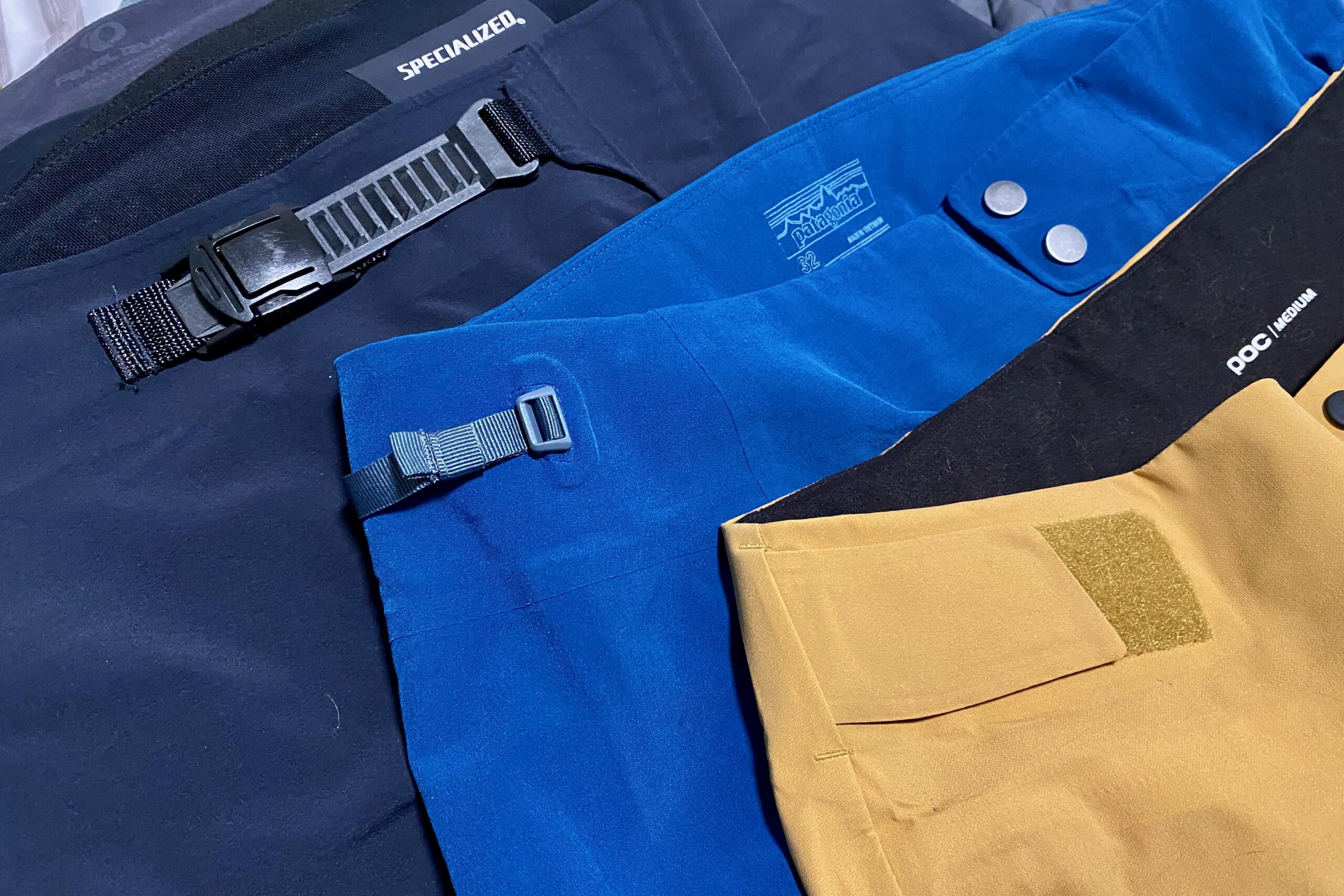

Inseam Length
The best inseam length comes down to personal preference, the type of riding you do, the elements you’ll be riding in, and your style. If you’re going on a long ride in sunny, exposed (as in, no tree coverage or shade) terrain, consider wearing longer shorts to protect the tops of your legs from getting sunburned.
Longer shorts can also protect the side of the legs from thick brush, tree branches, or insects if you’re riding in a buggy area or on a wild, unkempt trail. If you’re bikepacking or alpine riding on steep slopes and getting on and off your bike, the longer fabric can also help protect your legs from getting scraped up. A longer inseam also typically plays better with knee pads and helps to prevent pad gap — a gap between the bottom of the shorts and the top of the pad — and is generally preferred by those doing more aggressive riding.
Shorter inseams leave more of the thigh exposed, which may be preferred by many ladies for style purposes. The inseam lengths of the women’s mountain bike shorts in our guide range from 6 inches to 15 inches, with 9 to 12 inches being the sweet spot for most trail rides.
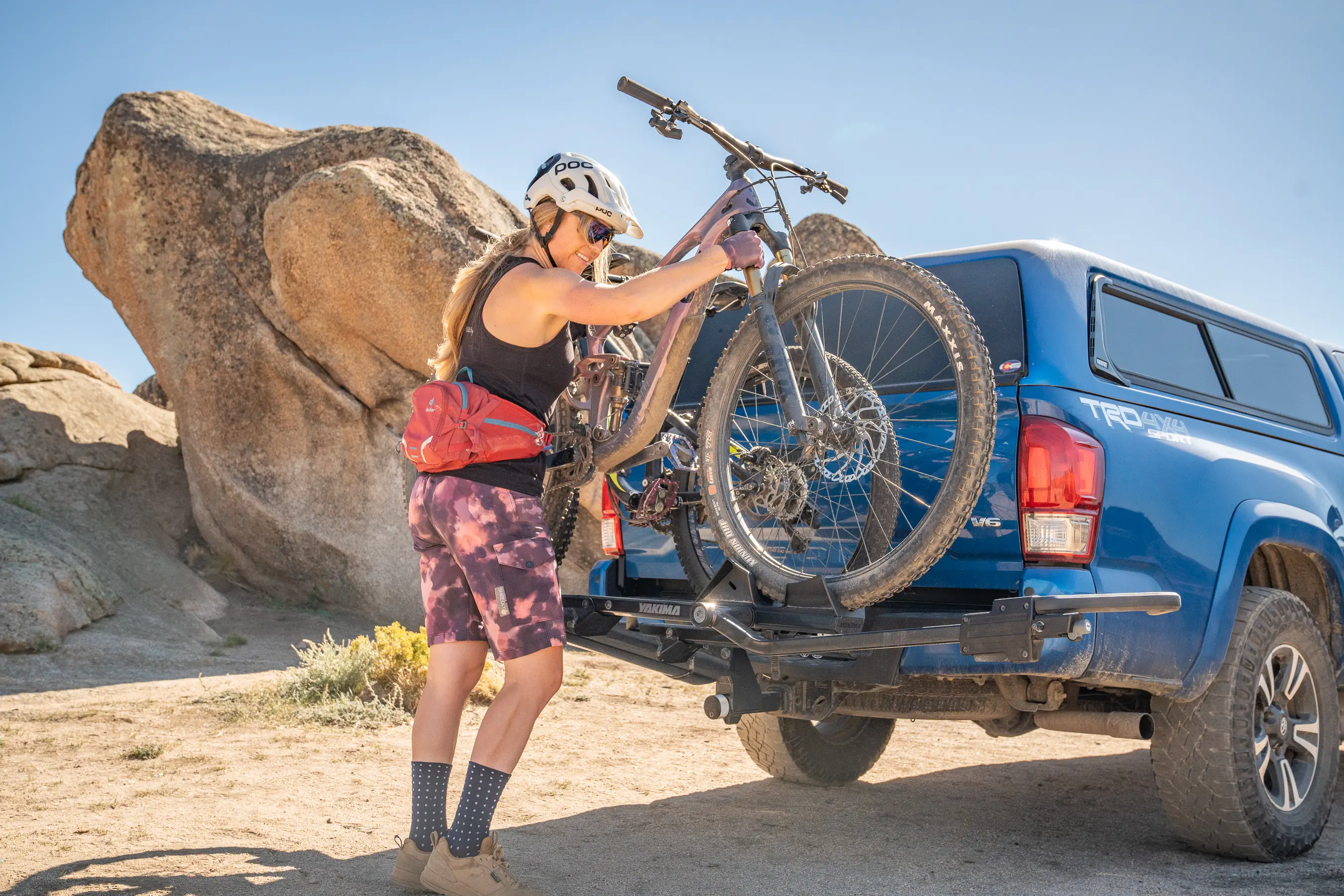



These days, most men’s baggy mountain bike shorts have inseams ranging from 11 inches to 15 inches. Shorts that hang down around the knee when standing and rise slightly above the knee when pedaling are the norm for most riders. What length works best for you will depend on your riding style, personal style, height, and whether or not you wear knee pads.
Shorts designed with pedal friendliness as the priority often have somewhat shorter inseams that are less restrictive of the pedal stroke, while those designed with gravity riding in mind typically have longer inseams for more leg coverage and better compatibility with knee pads.
Regarding knee pad compatibility, longer inseams tend to play nicest as they cover the top of the pad and help avoid “pad gap,” which can be considered a fashion faux-pas in certain circles. Of course, a rider’s height is also a consideration, as a 15-inch inseam may fit a taller rider perfectly and look like a pair of capris on a shorter person. Fortunately, some brands vary their inseam lengths by size for a more proportional fit across their size range.
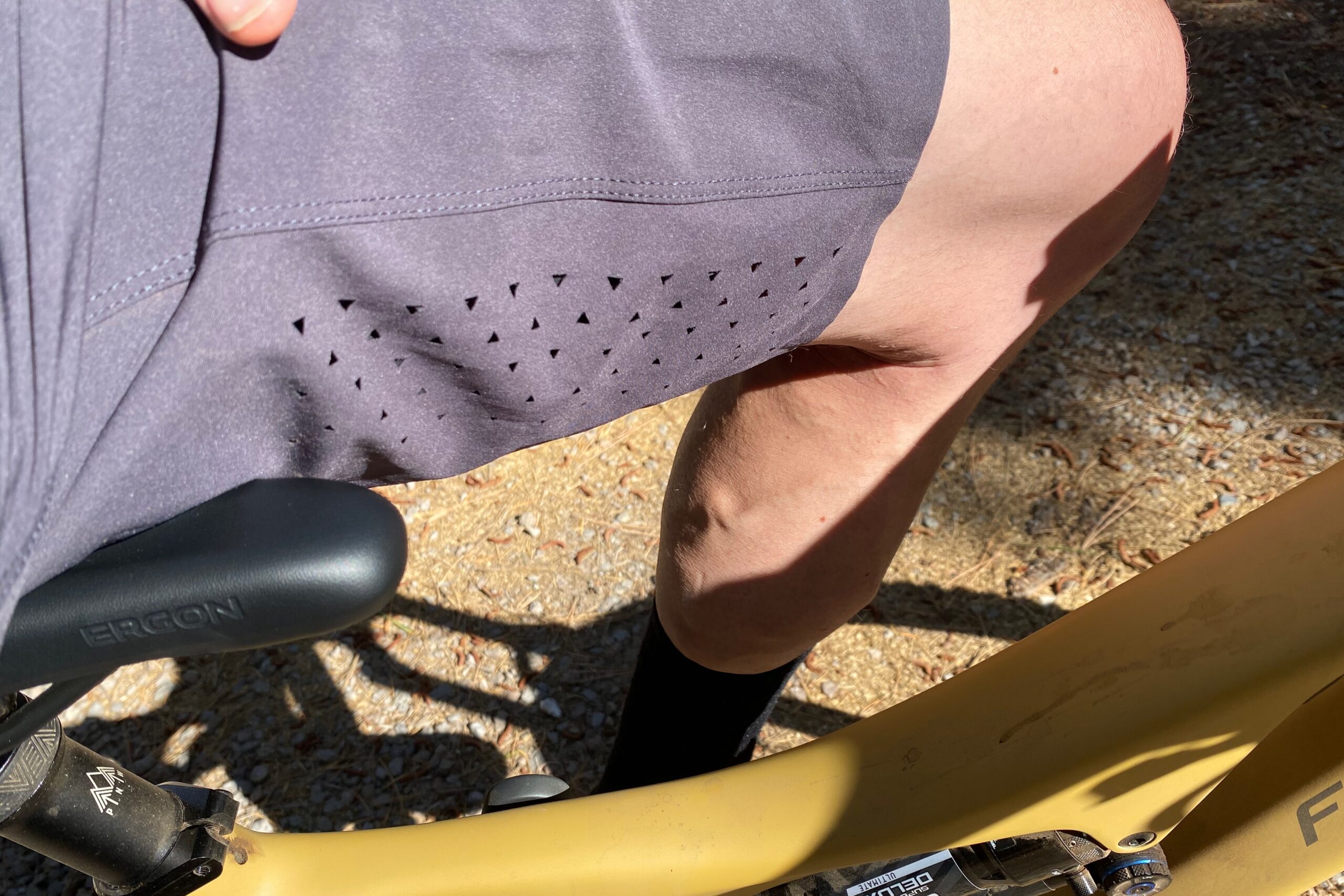

Ventilation and Breathability
Depending on the weather and temperatures you ride in most frequently or even seasonally, how much you perspire, or the level of effort you put in while riding, the ventilation and breathability of your mountain bike shorts may or may not be an important factor to consider.
People who live in warmer climates or ride in the heat of the day will generally be more inclined to wear lightweight or well-ventilated shorts than those who live and ride in more temperate regions. Live in an area where the seasons bring massive temperature swings? It is often best to have multiple pairs of shorts for different conditions or find the Goldilocks shorts that work well enough across a wide temperature range.
Different brands and styles of shorts approach ventilation in various ways. Most mountain bike shorts are made from technical fabrics that allow for some breathability and dry quickly when wet. Some shorts are made of fabrics that are so light and airy that they barely even feel like they are there, allow air to pass through easily, and dry incredibly quickly.
Other shorts combine light or mid-weight fabrics with ventilating features, most commonly laser-cut perforations on the inner thighs to allow additional airflow. Zippered vents are becoming less common, though some brands still use them. They work well and allow the rider to regulate the ventilation as needed.


Weather-Resistance
Given that shorts only cover about half your leg and have large openings at the hem by the knee, they are inherently not the most weather-resistant garment. Some brands and models of shorts do have weather-resistant materials or features in their designs, however, which may be of interest to those who ride in wet or variable conditions.
While the majority of mountain bike shorts use light to midweight fabrics that are intended primarily for use in dry and warm conditions, many of them have a Durable Water-Repellant (DWR) finish applied that works to repel occasional splashes from puddles or very light rain showers and drizzle. When combined with the quick drying properties of the materials, these shorts are appropriate for most people most of the time.
While many people who ride in wet conditions frequently will often wear mountain bike pants or trousers for added coverage and weather protection, there are times when some weather-resistant shorts may be a better option. For those times, there are several shorts on the market that are either completely waterproof or have strategic waterproof panels to combat tire spray and/or rain.
Waterproof shorts are certainly more of a niche product, but we have tested the POC Bastion shorts, which are constructed completely from waterproof fabric and have fully taped seams to combat water from all angles. Endura is another brand that makes several models of waterproof and weather-resistant mountain bike shorts.
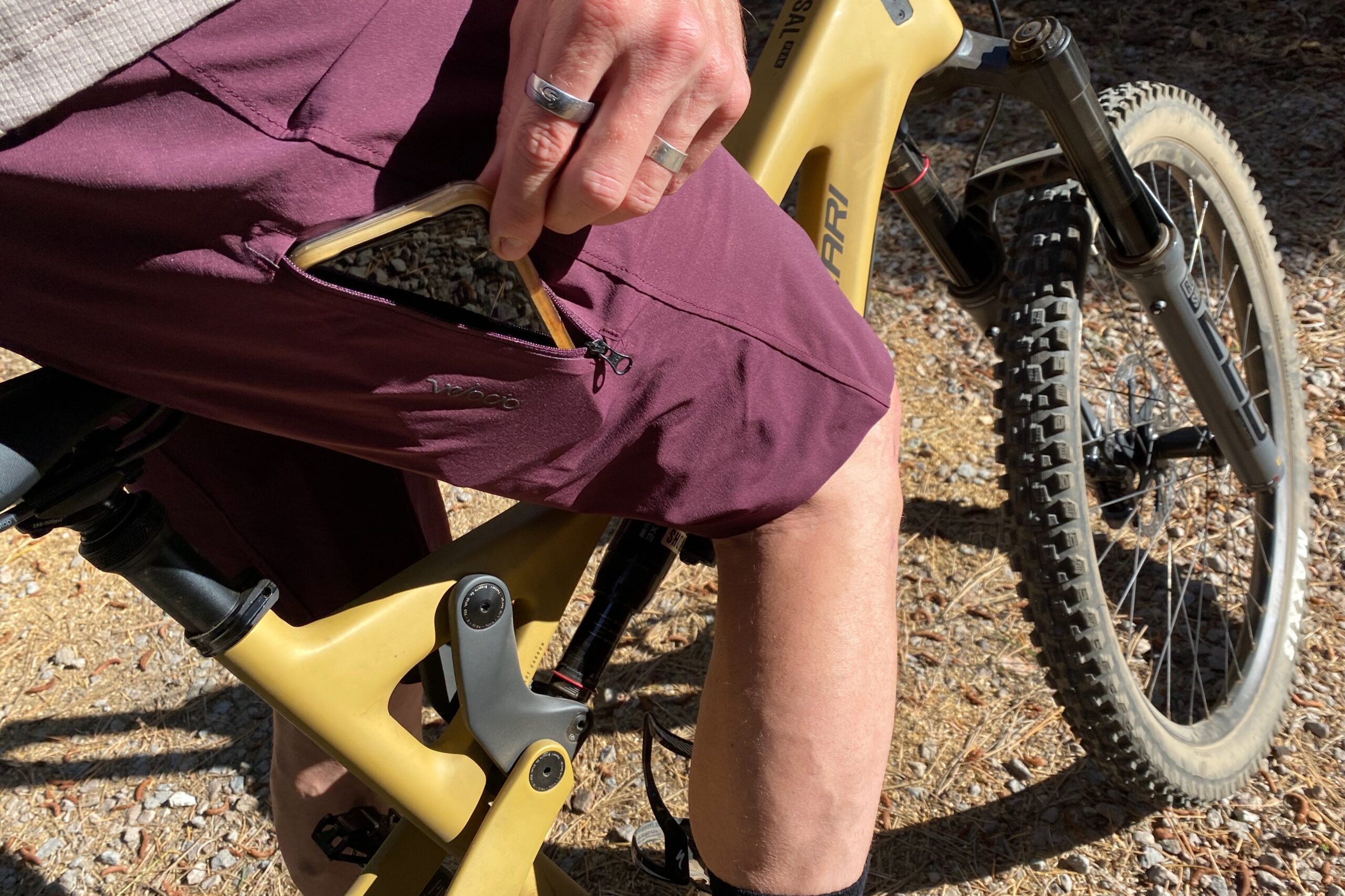

Pockets
The number, placement, and design of pockets on mountain bike shorts vary pretty dramatically depending on the brand, style, and intended use. The importance of pockets also varies pretty dramatically between riders and largely depends on how you carry essentials while you ride (fanny pack, backpack, on the bike, in your pockets) and how much you intend to carry in your pockets while riding.
Zippers are a common feature on most pockets, so you can close them and keep the contents secure when you’re rattling down the trail. While many mountain bike shorts used to have lots of pockets, there has been a general trend toward more streamlined and minimal designs that have fewer well-designed pockets.
All of the shorts we tested have at least one pocket (yes, even the women’s), with most having two or three, while the Curious Creatures Ramble Scramble Long sports a whopping six places to hold your stuff.
Some women’s mountain bike short designs come with minimal pockets, though, like the Curious Creatures Marilyn, which only has a single zippered pocket. Other shorts offer tons of pocket options like the Curious Creatures Ramble Scramble or the Club Ride Eden, which have two back pockets, two side pockets, and an additional pocket with a zip closure.
Again, consider what you really need to carry in your pockets on a ride. This varies, of course, but space for at least a phone seems like the bare minimum. Some riders also like to stash a multitool, snack, keys, chapstick, and more. If you intend to carry more than a phone in your pockets, then shorts with just one pocket, like the 7Mesh Slab or Specialized Trail Air, may not have adequate storage for you.
One great thing about modern mountain bike shorts is that many brands have been designing great pockets that are easy to access and hold their contents securely and out of the way. Often, these are zippered, back-loading pockets on the thighs or hips, and they can typically fit a modern smartphone with good stability so it doesn’t flop around while pedaling or descending. Not all pocket designs are great, however, and some are not as well executed, easy to use, or pedal-friendly as others.
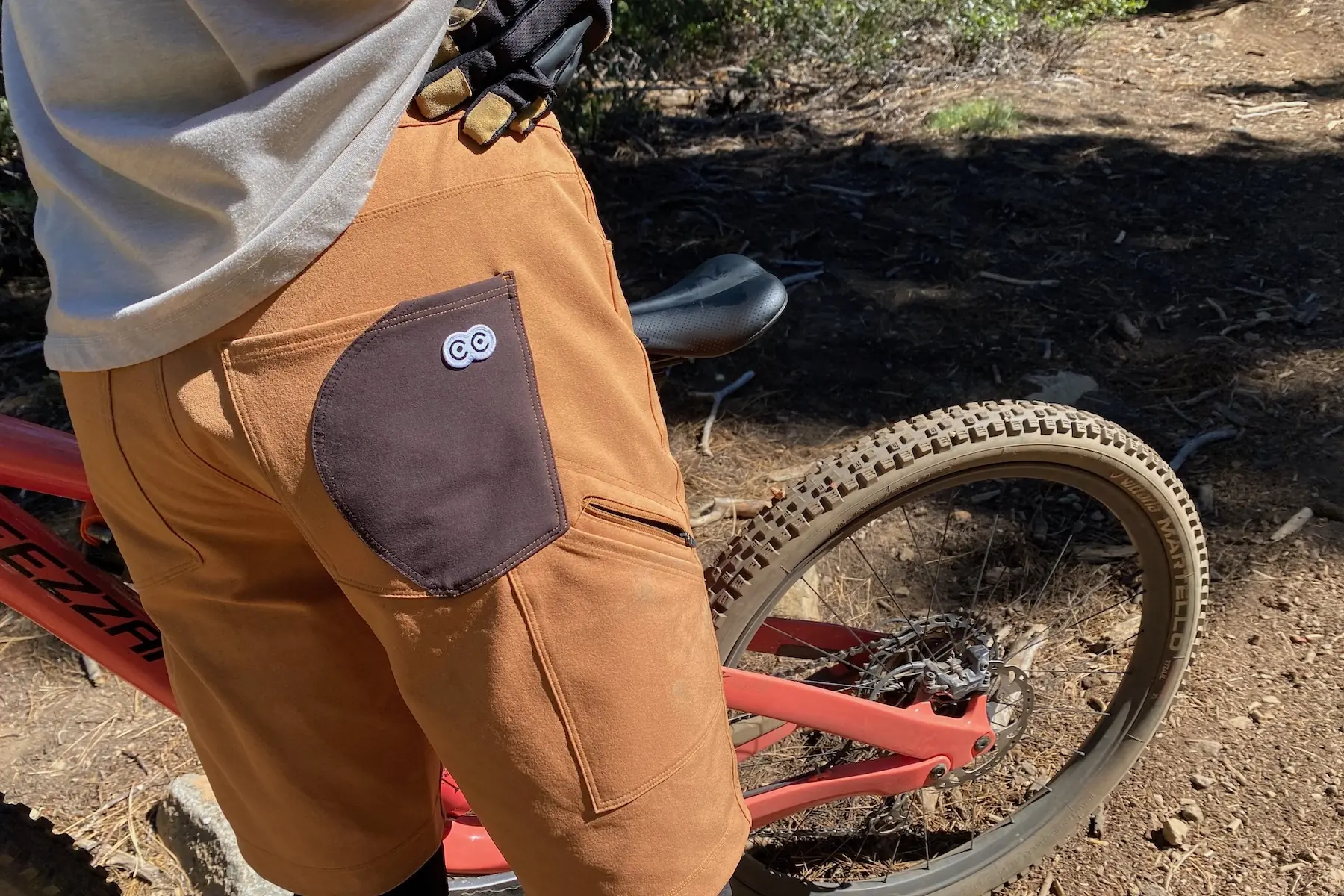



Style
When you look good, you feel good, and when you feel good, you can ride better. Right? Well, maybe it isn’t that simple, but all things being equal, we think that most people can agree that style matters a little bit. And, if you’re paying top dollar for some fancy mountain bike shorts, they might as well look good and line up with your personal aesthetic.
Not too long ago, the mountain bike shorts market was flooded with models that looked like they were better suited to a motocross race than pedaling a bike through the woods. Thankfully, those days are mostly behind us, and while you can definitely still find shorts that have a moto-influenced style, mostly on the DH side, there are now plenty of options that come in more subdued colors and have minimal branding that appeals to a broader range of tastes.
Looking at the shorts we tested, it is clear that solid colors and small logos are currently trending. Style is subjective, of course, but thankfully, there’s lots of variety when it comes to colors and designs, so most people should be able to find something they want to wear.
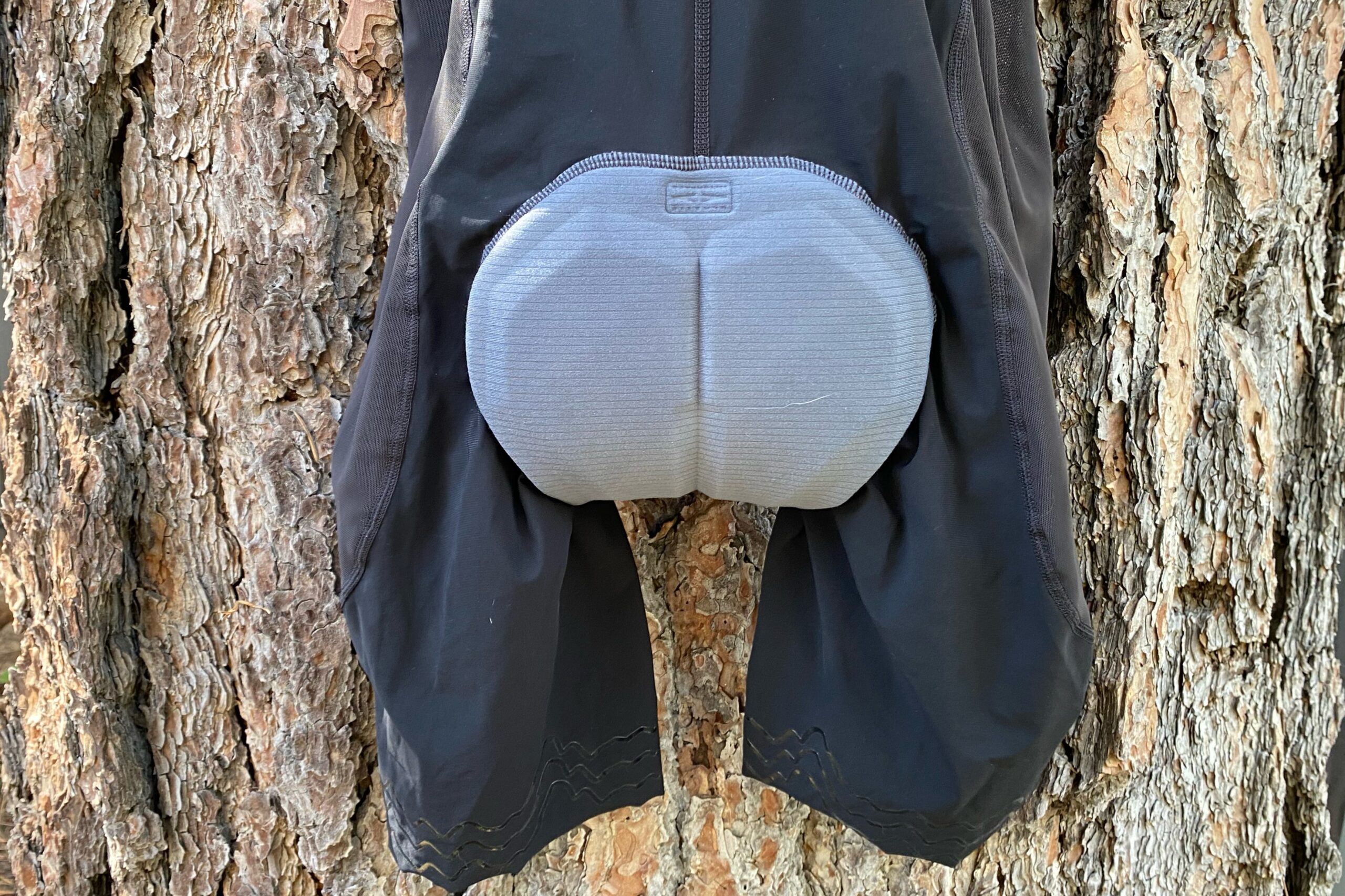

Padded Liner Shorts (Chamois)
One of the first pieces of advice we give first-time riders is to go out and purchase a pair of shorts with a good chamois or a padded liner short to go with your baggy shorts. It’s the single most important (and often overlooked) piece of gear that will make or break your ride. After all, we are talking about your butt here! You know what we’re talking about if you’ve ever experienced a saddle sore. And if you haven’t, let’s try to keep it that way with some of our favorite shorts.
Pronounced SHAM-mee, the chamois is the pad that is sewn into a cycling short to protect the groin area and sit bones against the saddle. The chamois is constructed with a pad that has cushioned foam with a range of densities — some designs offer more cushion than others. Typically, the materials also wick moisture and are soft. Wearing a chamois instead of regular underwear also eliminates seams, which can rub and cause chafing.
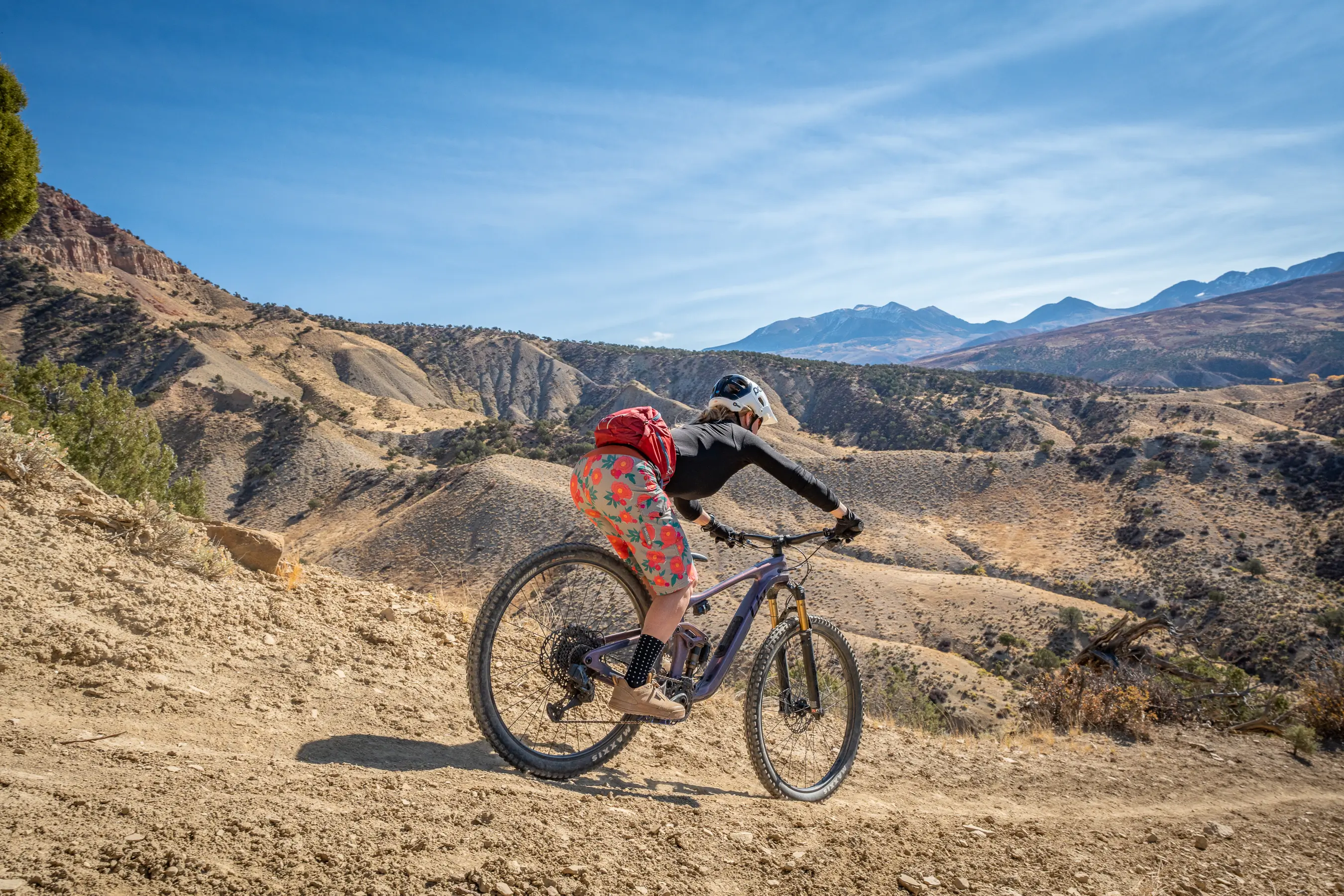



In mountain bike shorts, the chamois can be integrated into the shorts, but more often, the chamois is integrated into a short, tight-fitting liner worn beneath the exterior bike shorts. Some baggy shorts are sold with a chamois liner, which is nice to have included in the purchase. More often than not, however, these are not the best. They are better than nothing, of course, but the best-performing chamois are typically an aftermarket purchase. Some of our favorites are the Shredly YOGACHAM and the Velocio Trail Mesh Bib Liner.
While an included liner short does add value, these are typically not the highest quality. We recommend finding some good padded liner shorts or bibs that fit well and buying a few pairs to keep in rotation. There are lots of excellent options on the market these days that have higher quality chamois pads and/or special features like bib straps and integrated pockets for storage.


Price & Value
The models we tested range in retail price from $95 up to $200, with most models falling roughly in the middle of that range. Materials, designs, construction methods, brands, and marketing budgets all play a role in the final price of a pair of mountain bike shorts. Often, you get what you pay for, and if you’re willing and able to spend a bit more, you often get a higher-quality product or something that may best suit your specific needs.
Budget
We consider mountain bike shorts that cost less than $100 to be budget-friendly. You don’t have to shell out the big bucks to get something that’s perfectly functional and will likely last you for a couple of seasons of use, if not more.
In the under-$100 price range, however, we’ve found that the quality of materials and construction goes way up the more you spend. Shorts that retail for $60 end up feeling and performing at a lower level than those that sell for $95. Still, shorts like the Dakine Vectra ($95) or the 100% Airmatic ($99) are well-made, versatile options that perform well for the price.
The Flylow Lola Short ($95) impressed us enough to become our favorite budget-friendly model. With a soft fabric and versatile cut, these shorts are our recommendation if you don’t want to break that C-note threshold.
It’s also worth mentioning that mountain bike shorts often go on sale toward the end of the season, and last year’s colors may be sold for a significant discount. This means you may be able to find many of the mid-tier and premium options at budget-friendly prices. It pays to shop around.
Mid-Tier
In our opinion, shorts in the middle of the price range — $100 to $150 — tend to offer the best price-performance ratio and are the sweet spot for most riders. Here, you’ll find higher-quality materials, better fits, and many products that cater to more specific use cases.
For example, our best overall pick, the Patagonia Dirt Roamer ($129), tops our list for its quality, lightweight yet durable material, excellent fit, and comfort no matter how long the ride or how hot it gets. For those pedaling uphill less and letting gravity do more of the work, the Fox Defend ($130) shorts are made from a more robust material with a cut designed to provide more coverage and work well with any style of knee pads. Both the Fox and the Patagonia shorts are excellent shorts, but they are geared toward different types of riding and riders.
A great example for women’s mountain biking shorts is the Shredly Limitless 11″ ($108). With a comfy, wide, yoga-style waistband along with a stretchy fabric and great pocket layout, these shorts quickly became a favorite.
Climbing a little higher in price, the shorts from the upstart brand Curious Creatures bring style and high-quality materials to the table. Both the high-waisted Marilyn Short ($130) and the super-versatile Ramble Scramble Short ($139) fit into different style and performance categories, but both are impressively well-made. Curious Creatures is still a relatively new brand selling a smaller volume of products and, therefore, their production costs are higher which is a contributing factor in the slightly higher price.
Premium
Above the $150 mark, we’re getting into the high-end of the mountain bike shorts market. These shorts are typically made from premium materials and have excellent fits, more features, or higher production costs. For example, the Mission Workshop Traverse XC ($185) shorts are made in the USA from American-made materials. It stands to reason that they cost more than something made overseas.
Similarly, the POC Bastion ($200) shorts command a higher price because they are made from a waterproof material with fully taped seams and waterproof zippers. While not quite as expensive as those models, the Velocio Ultralight Trail Shorts ($159) are exceptionally lightweight, fit amazingly well, and come with a stretchy Arcade belt. On the flip side, the Norrøna models we tested are wind and water-resistant, like the Fjora Flex 1 ($159), or super burly, like the Fjora Heavy Duty ($179). Both shorts are made with premium, specialty materials to make them excellent in their own way.


Frequently Asked Questions
The easy answer is coverage. When you’re riding a bike, no matter the bike or your riding level, the last thing you want is fabric that rides up, rides down, or doesn’t provide enough coverage or protection.
When you bike in the mountains, desert, or other environments, you’ll want skin coverage and protection against the elements, including sunshine (even your legs can get burned!), wind, rain, or hail. The further you venture out from a trailhead and the higher in elevation you go, the more likely you are to get stuck in a variety of conditions (with no quick bailouts), and the exposure becomes stronger such as being closer to the sun.
You’ll also want skin protection against abrasive vegetation on the side of the trail. Whether you’re blazing narrow singletrack that is surrounded by lush wildflower fields or scratchy bushes, you’ll be glad when your epidermis is not exposed.
Factor in that you may want a nice supportive or padded liner underneath, and longer shorts are the way to go. We’ve tested a slew of shorts that range in length from 6 to 15 inches on the inseam.
The best mountain bike shorts, our testers found, were the ones that offered a comfortable and supportive fit, work with a liner or no liner, and are durable, breathable, and can hold up to weather like water and wind.
When it comes to the features of mountain bike shorts, like inseam length or number of pockets, this is personal preference but is also influenced by the conditions you’ll be riding in and the type and duration of the majority of your rides.
Our testers preferred having at least one pocket with a secure closure, and either adjustability or an elastic stretch component in the waist. They also generally prefer shorts that fall just above the knee, but for certain objectives, the ultra-long lengths are better — like longer bikepacking trips in harsh sunlight.
While some riders still prefer to wear tight-fitting spandex shorts for mountain biking, most modern mountain bikers prefer to wear baggy shorts. Not only do most people want to have a more casual look and feel on the bike, but modesty also plays a role for many. While looks are a big part of the reason to wear baggy shorts, they also offer a bit more protection in the form of leg coverage and another layer of material between your skin and the trail or scratchy trailside bushes.
The fit of mountain bike shorts overall is generally baggier than you are probably used to. Similar to running shorts, the reasoning for this is range of motion. You don’t want to feel too constricted while you are pedaling and moving around on your bike.
Mountain bike shorts are also typically made of thicker fabric for durability, and a looser fit means more comfort as well, especially since many riders choose to wear a liner, or chamois, underneath their shorts. Outside of bagginess, shorts come in a variety of fits and lengths to suit varying riding styles or personal preferences.
You can mountain bike in any old pair of shorts you choose, and many people do. There’s nothing wrong with riding in some hiking shorts or old cut-off jeans, but we prefer to wear shorts that are specifically designed to be worn while mountain biking. Durable materials that are lightweight, quick-drying, and stretchy are combined with mountain bike-specific cuts with waist articulation and high crotch gussets to provide on the bike comfort and freedom of movement.
Quality mountain bike shorts will help you regulate temperature and moisture so you stay comfortable throughout the course of a ride, reduce the chances of irritation and chafing while pedaling, and provide leg coverage and protection from the sun, trailside obstacles, and unexpected encounters with the dirt.
The price of mountain bike shorts varies pretty significantly, but like any outdoor apparel designed for a specific purpose, they can be pretty expensive. Technical fabrics, finishes, designs, and construction methods are the primary reasons that they can cost as much as they do.
Thankfully, there are lots of options, with less sophisticated, entry-level shorts usually coming in around $80-100, and more expensive shorts costing as much as double. If you’re operating on a budget, you can often find great deals on last year’s models or during end-of-season sales to save significant amounts of cash.
There’s no rule that says you have to wear padded liner shorts when you ride, but they definitely exist for a reason. Given that mountain biking takes place on rough trails and uneven terrain and we spend lots of time seated and pedaling on trail rides, adding a bit of cushioning between your body and your bike saddle can help to enhance and maintain your comfort while riding.
By adding some cushioning, padded shorts help absorb some impact, help to avoid pressure points, and can reduce or prevent irritation, chafing, and sores that may otherwise develop. Another bonus is that padded liner shorts are generally pretty snug fitting, and they can help to keep sensitive parts of the male anatomy tucked up and out of the way, reducing unwanted and uncomfortable encounters with the saddle.
Related Content
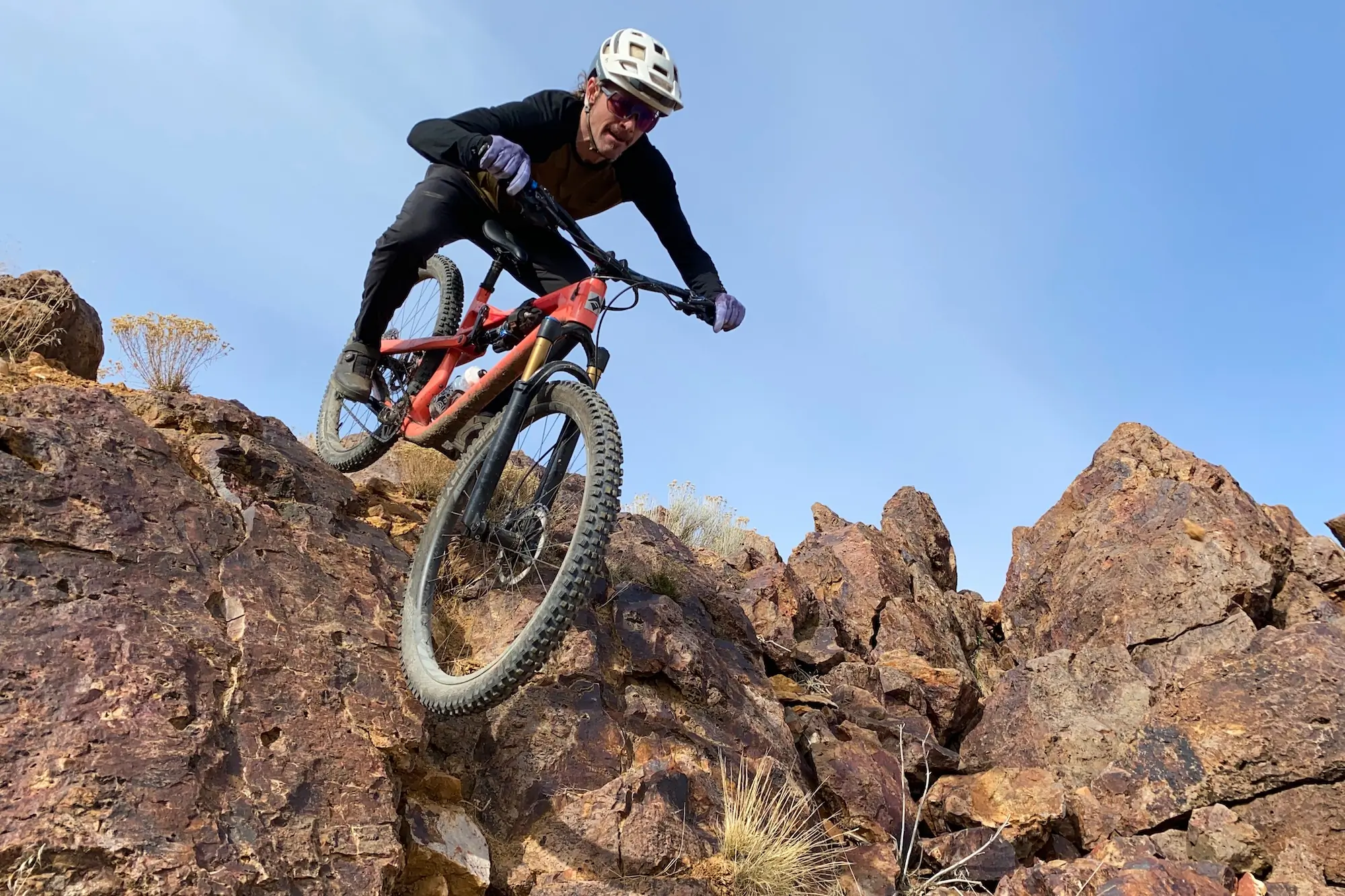

The Best Mountain Bike Helmets of 2025
We tested the top models from Giro, Specialized, POC, Smith, and more to help you find the best mountain bike helmet for your next ride.


The Best Mountain Bike Shoes of 2025
We tested 17 of the top mountain bike shoes from Crankbrothers, Specialized, Shimano, Five Ten, and more, to find the best shoes for every rider.
